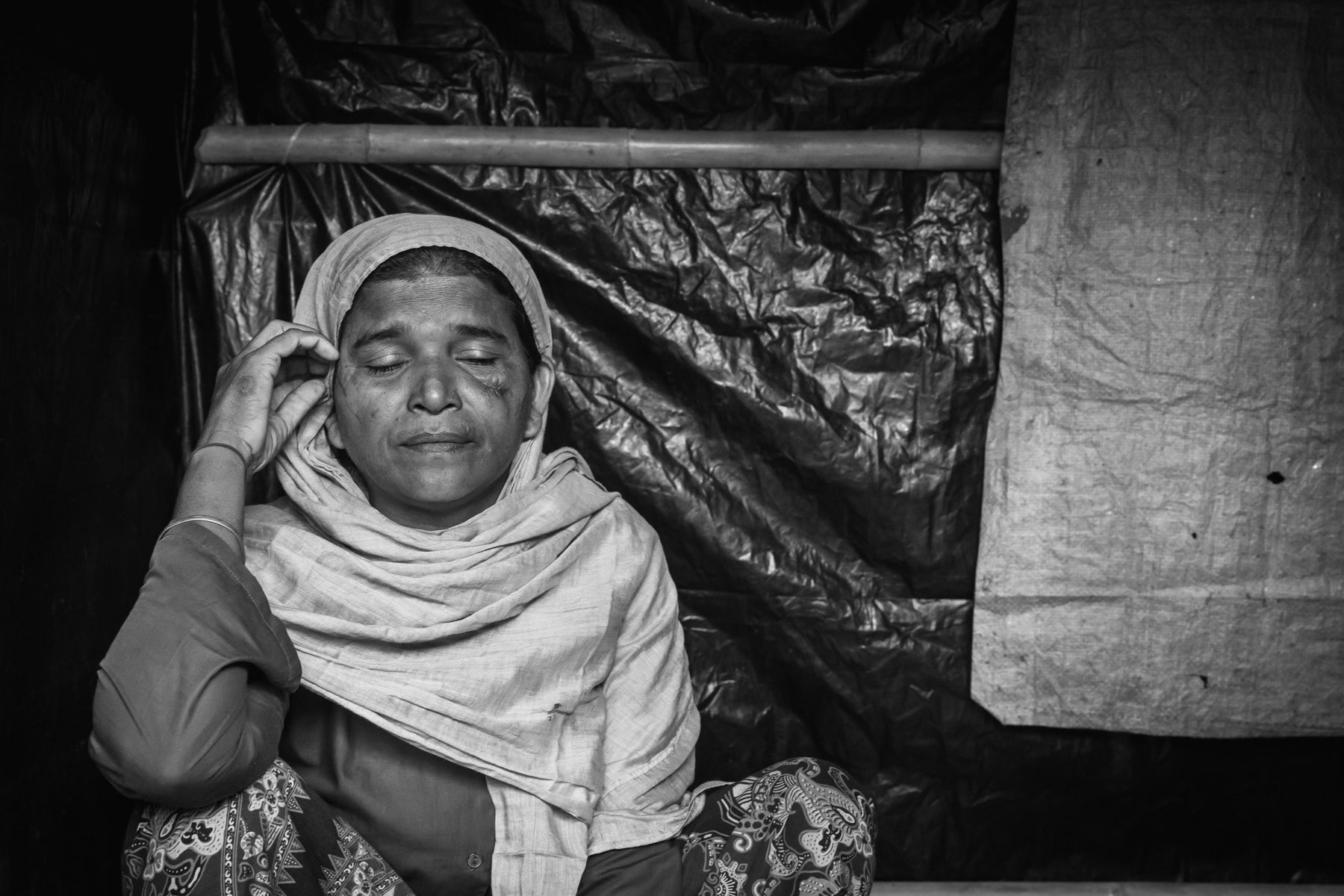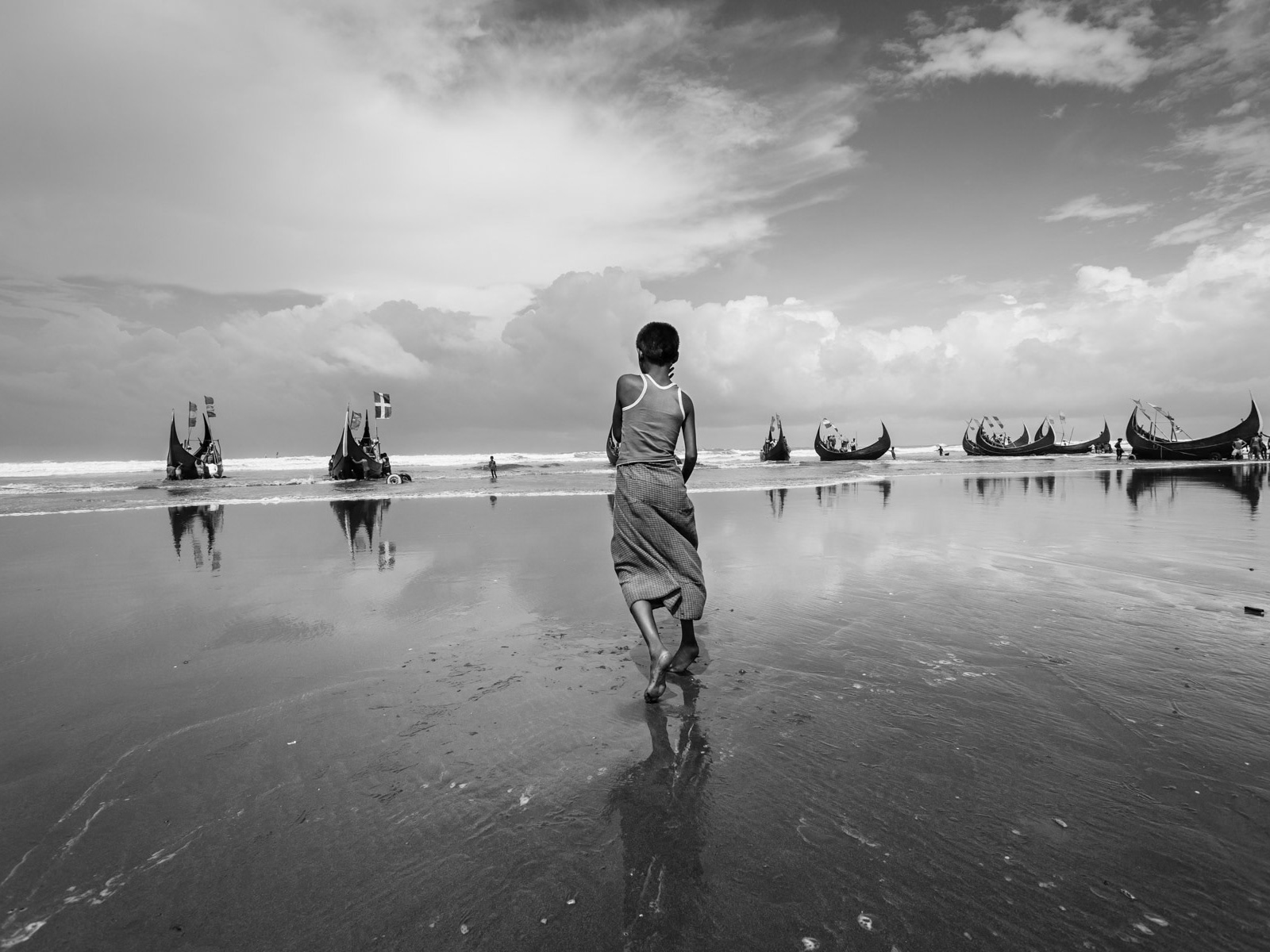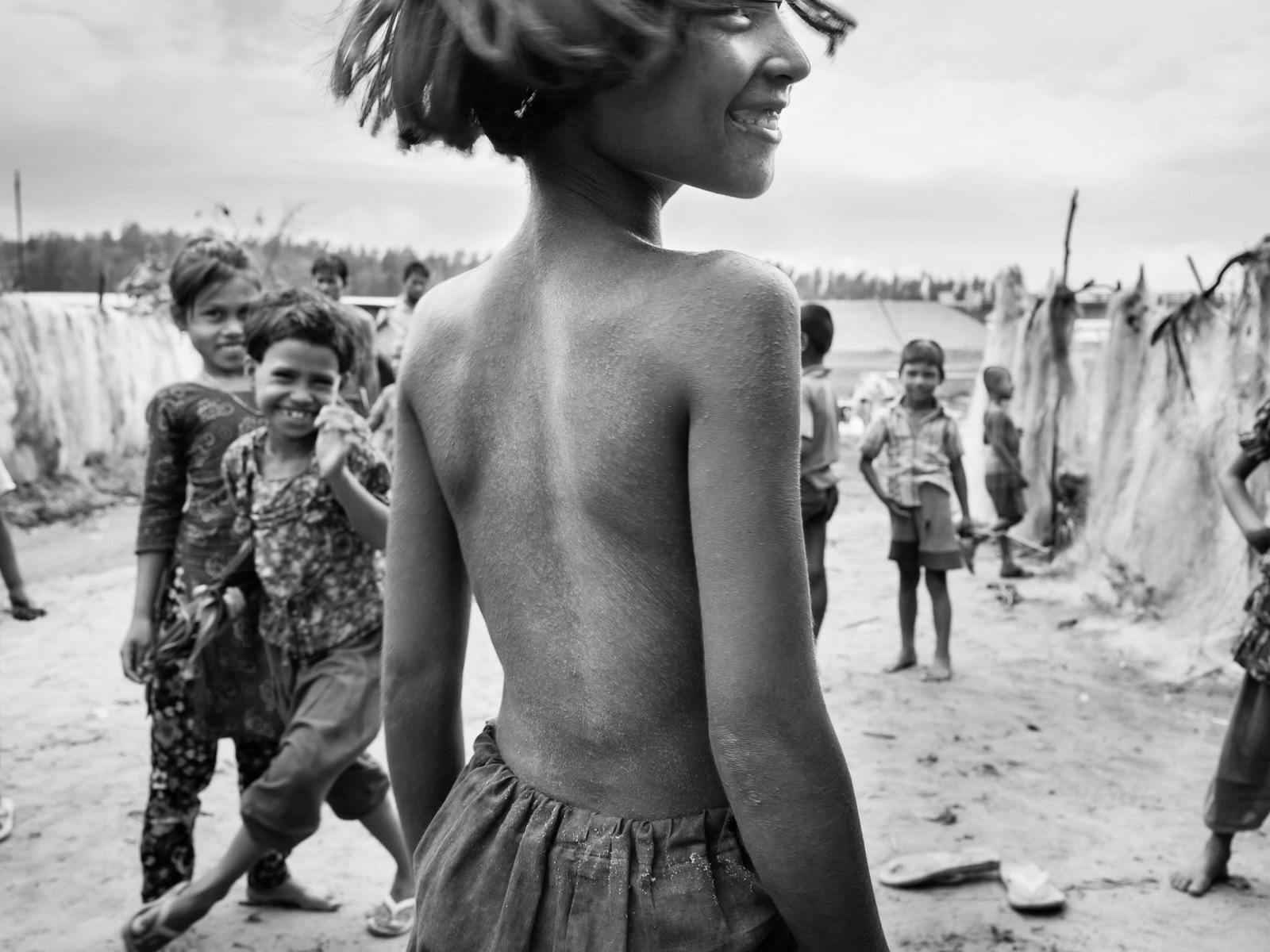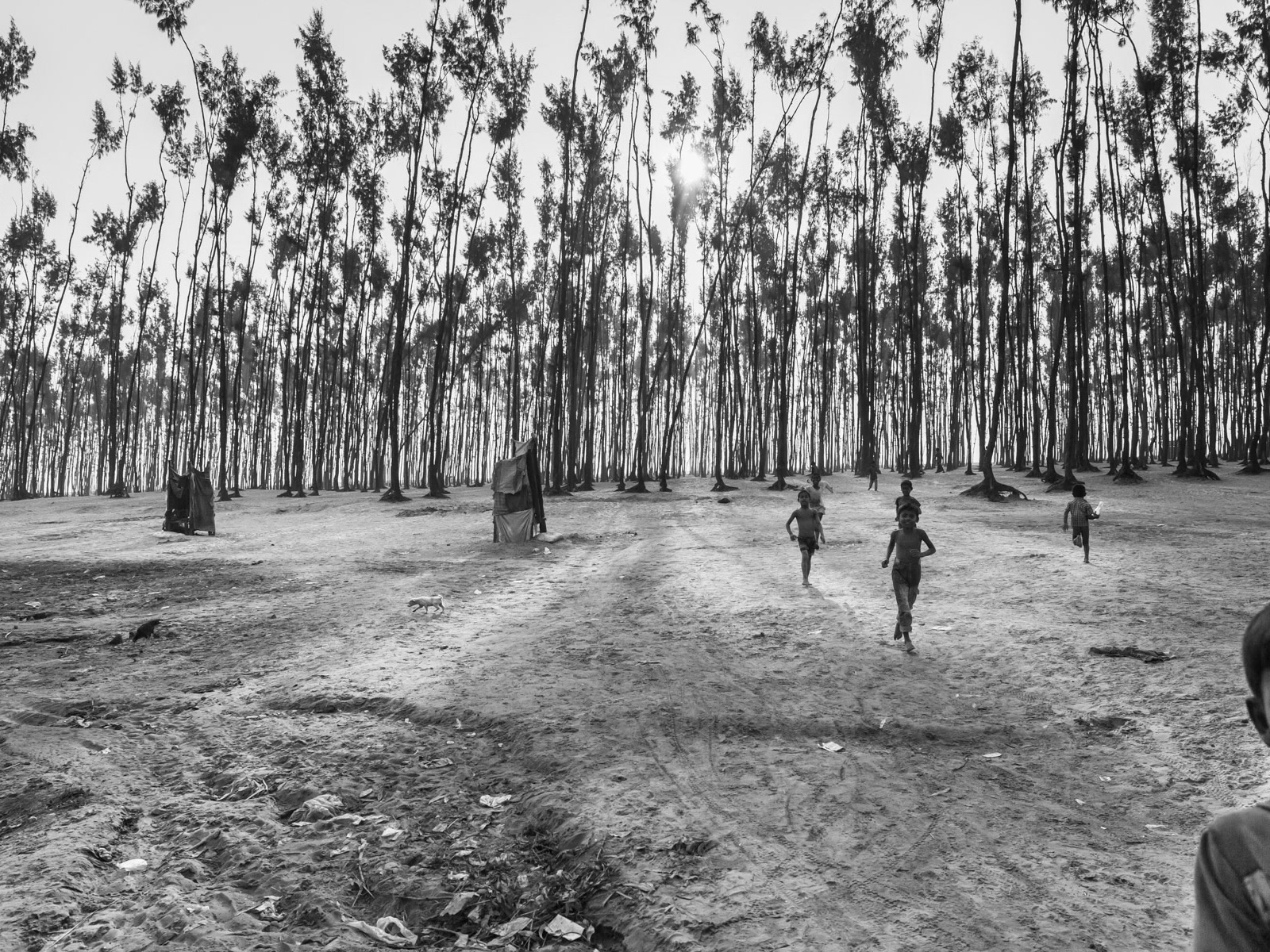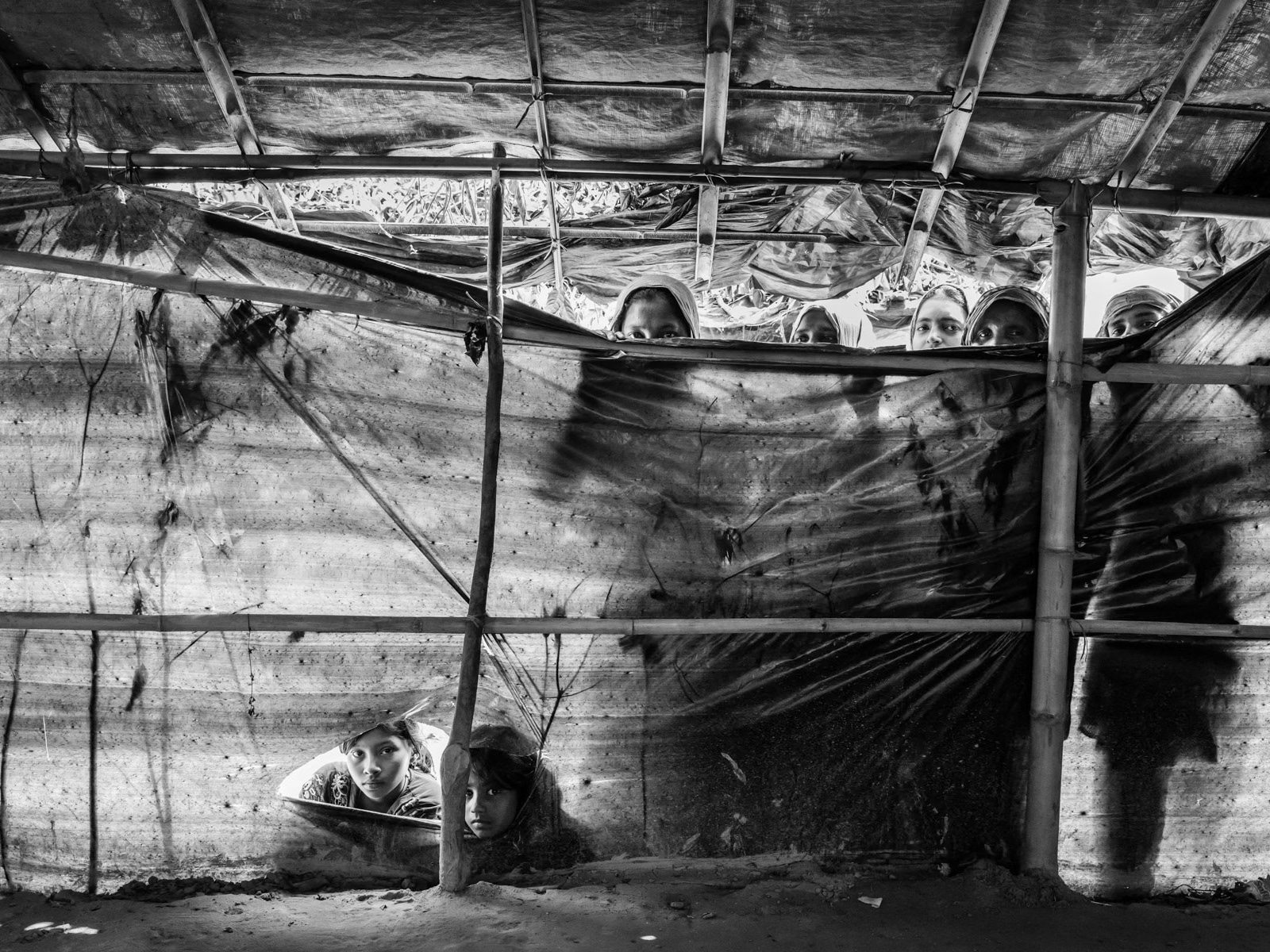Between 2016 and 2017, the Rohingya, a Muslim minority group in Myanmar's Rakhine State, were subjected to horrific waves of persecution and violence, which many international observers have described as ethnic cleansing. The Myanmar military, in a brutal crackdown following attacks on security posts by Rohingya militants, launched a series of operations targeting civilians. Rohingya men, women, and children were subjected to horrific violence, including mass killings, torture, and rape.
Women and girls were especially vulnerable, with widespread reports of sexual violence. They were abducted, gang-raped, and mutilated by soldiers, who deliberately targeted them as a weapon of war. Many of the survivors became pregnant, further deepening their trauma. Whole villages were burned to the ground, leaving Rohingya families without homes or livelihoods. Forced to flee for their lives, many of the victims trekked for days or weeks, under constant threat of death or capture, toward neighboring Bangladesh.
Children were among the most devastated, witnessing or experiencing extreme violence at an early age. They were separated from their families, or worse, orphaned by the violence, traumatizing them for life. Those who survived the ordeal were emotionally scarred and in desperate need of psychological support.
Upon crossing the border into Bangladesh, the refugees, including tens of thousands of women and children, arrived in a state of shock, many suffering from physical injuries, dehydration, and malnutrition. The largest refugee camp in the world, in Cox’s Bazar, took shape to accommodate the influx of displaced people. The camp was overcrowded, with inadequate sanitation, making conditions rife for disease. Despite the efforts of humanitarian organizations, the refugees were left in limbo, with no permanent solutions in sight. Many Rohingya still live with the trauma of their experiences, facing uncertain futures, and struggling to rebuild their lives in exile.
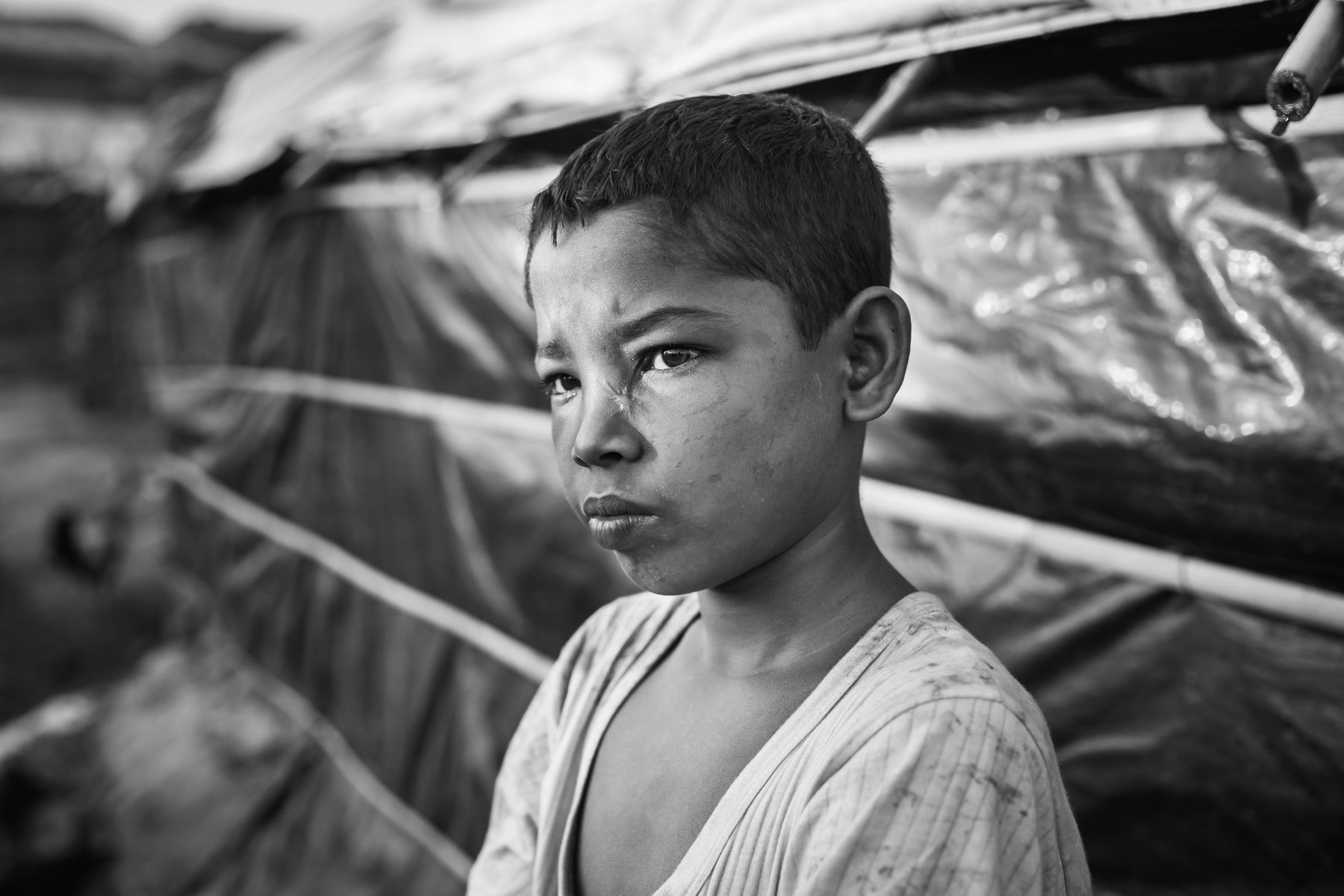
Mohamed Anosh is 10 years old and from Rabailla near Maungdaw. He was hit by a shrapnel from a helicopter shell just under the eye. It took him seven days to reach Bangladesh. He witnessed the execution of his parents by the Burmese military. He came and lives with his grandmother. He lost every track of his younger brother since the attack. Kutupalong refugee camp, Bangladesh, November 2017
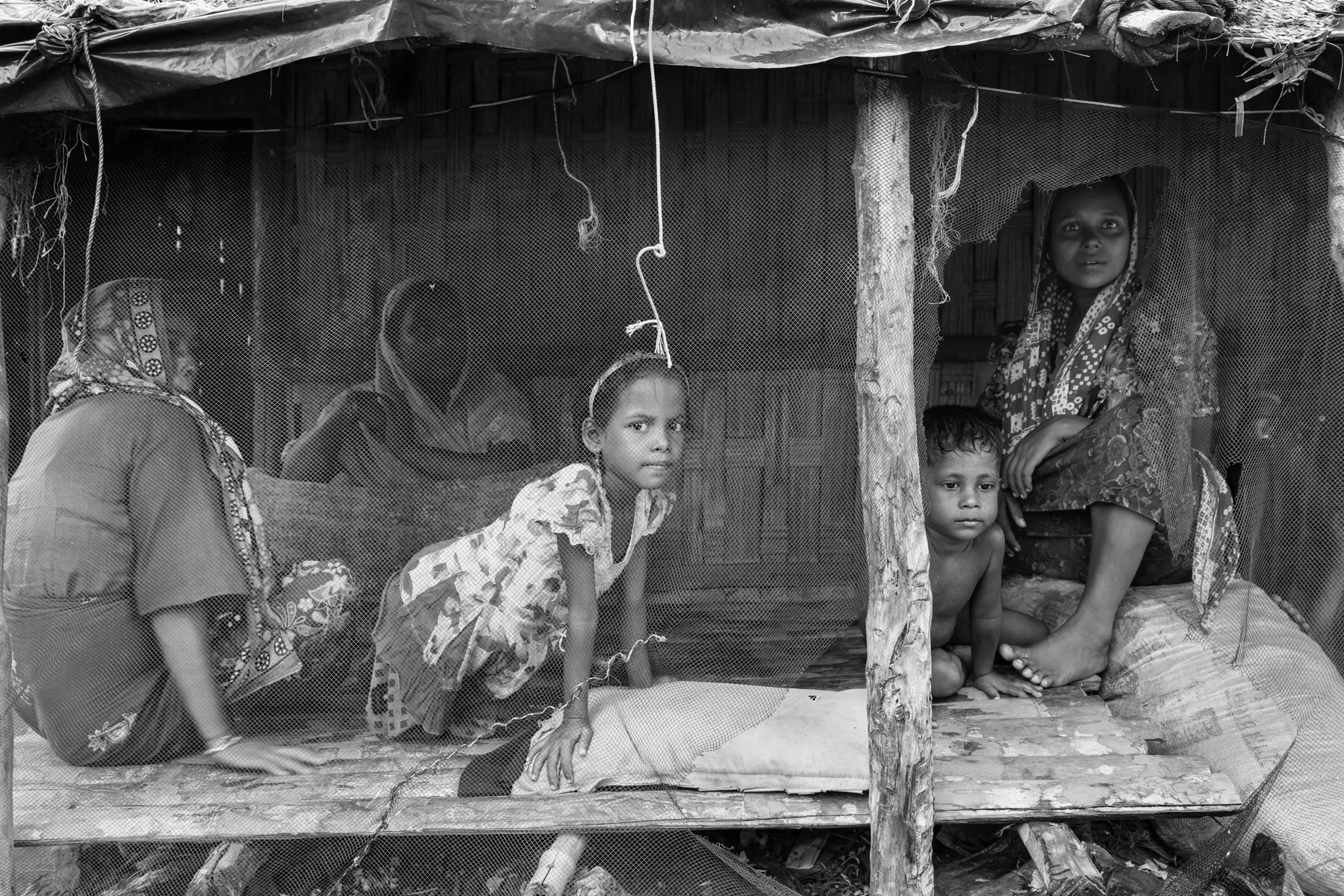
Un-registered camp for Rohingya refugees in Southern Bangladesh, June 2015
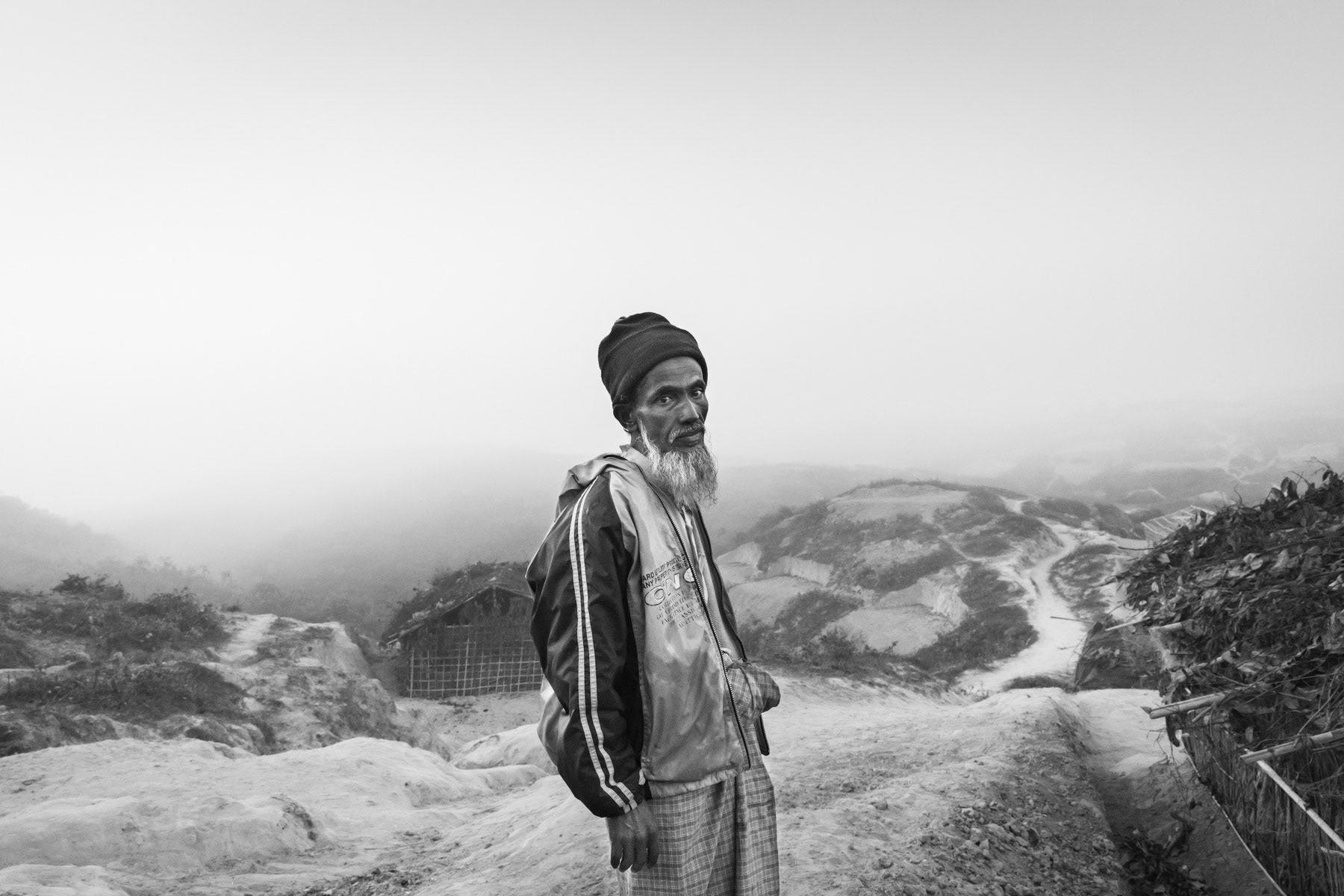
New part of Kutupalong refugee camp for Rohingya being extended on daily basis to cope with the 100,000 Rohingya that have fled violence in Rakhine since October 2016. Kutupalong, Bangladesh, February 2017
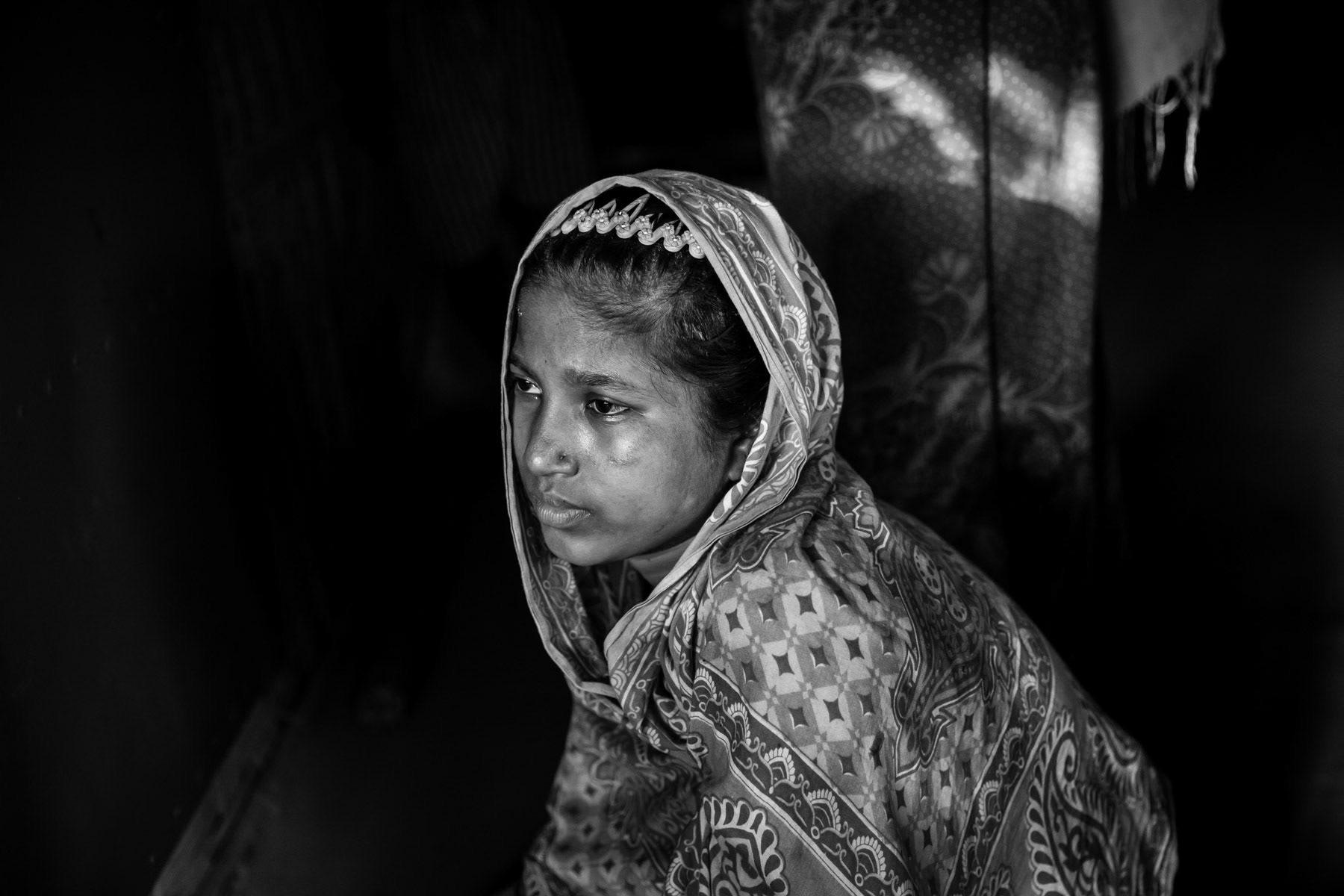
Munuara, 17 years old, is from a village near Rathidaung. Her husband was killed by the Myanmar military, she came to Bangladesh with her neighbour after that. She was beaten and gang-raped for 5 days by military in barracks near Rathidaung. Twenty other Rohingya girls were also present in the building and raped by a group of approx 30 military. She escaped after the military moved on to another location. Countless rape allegations have been consistently reported during the past months, an accusation the Myanmar authorities deny. Mass rape is often used during ethnic cleansing campaigns, both acts consitute crimes against humanity and war crimes when carried out by military personnel. Shamlapur refugee camp, Bangladesh, May 2017

Un-registered Rohingya refugee camp near Teknaf in Bangladesh, June 2015
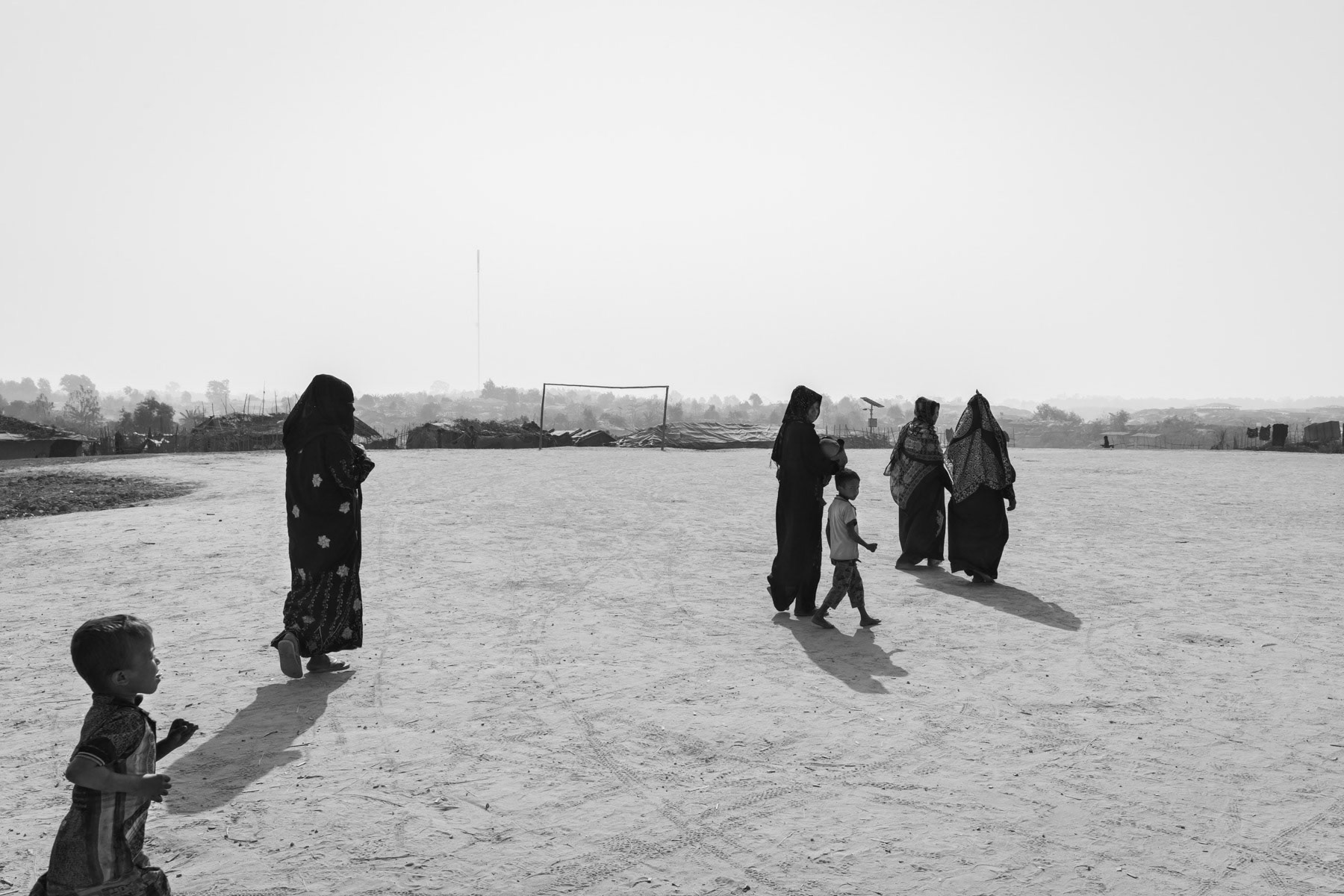
Kutupalong camp for Rohingya refugees absorbing succesive waves of refugees since 1978. Cox's Bazar, Bangladesh, February 2017
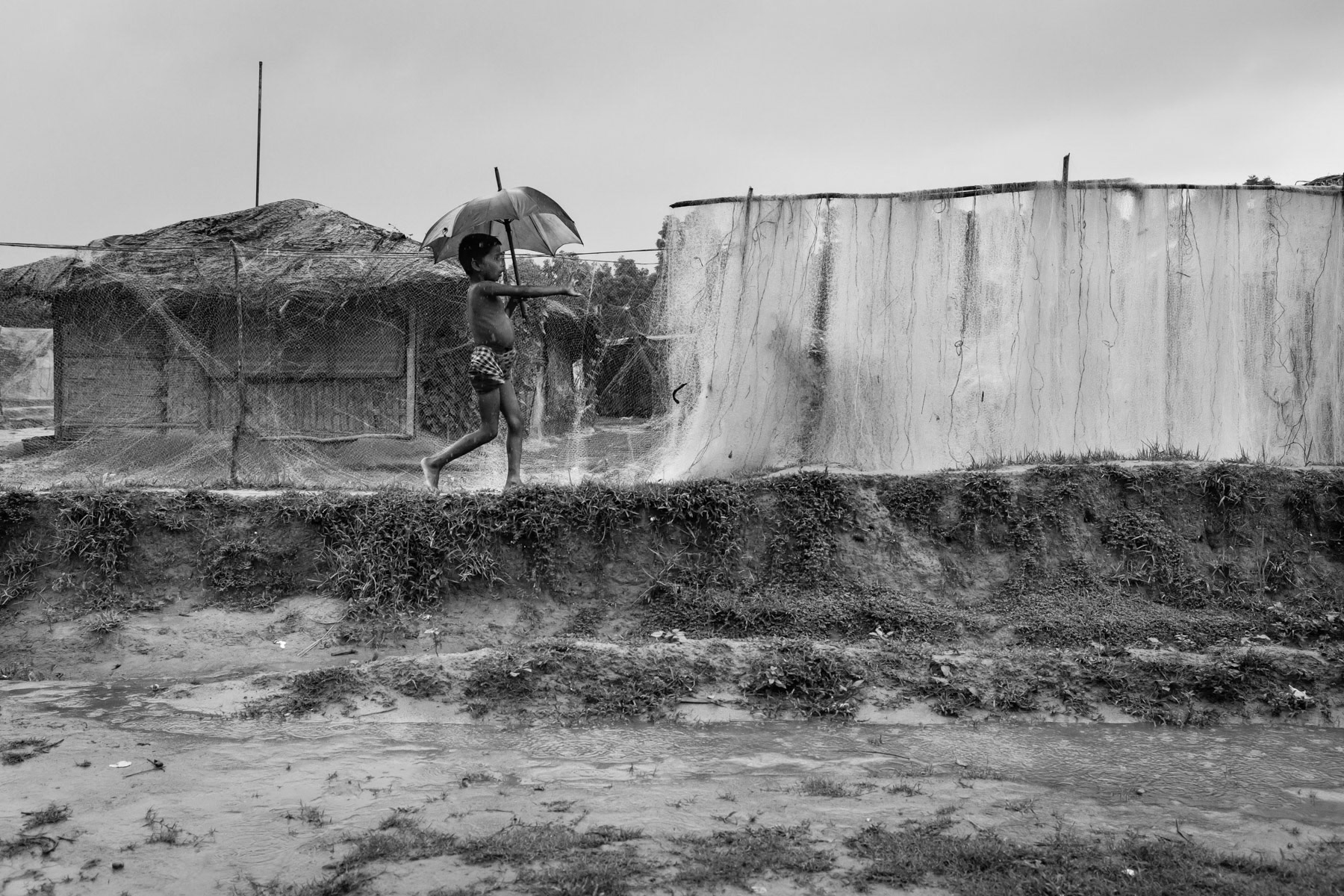
Rohingya refugee camp during monsoon, Shamplapur, Bangladesh, June 2015
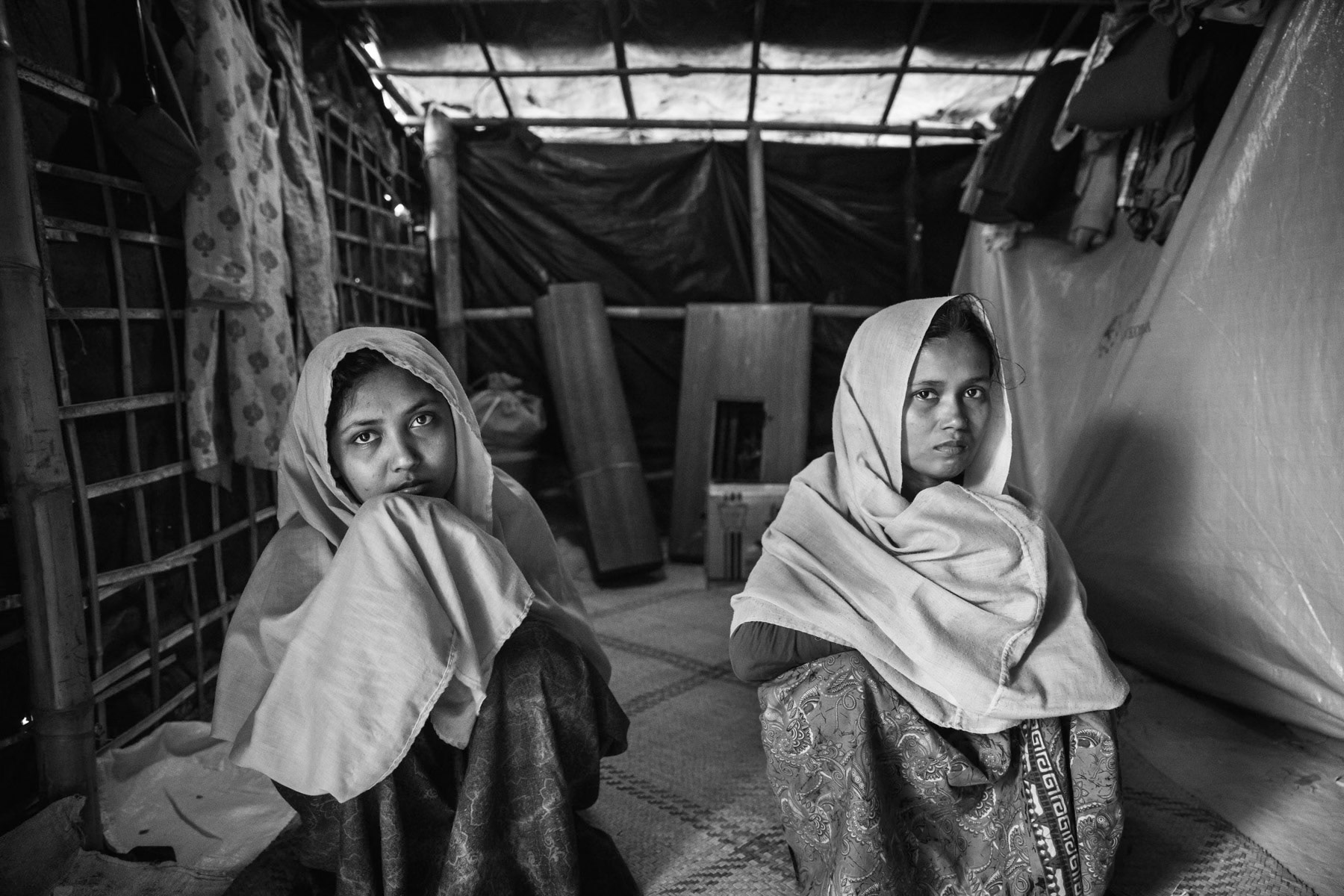
Two sisiters, Shopika Begum (left), 20 years and Rashida Begum (right), 25 years, from Tula Tuli in Maungdaw township in Myanmar. Both were gang raped by the Burmese military forces that attacked the village on 30 August 2017. Shopika's husband was executed and decapitated, Rashida's husband managed to escape, but her two children were executed. The two sisters were taken with approximately 30 other women to separate barracks where they would be repeatedly gang raped by groups of 5-6 military. After the gang rapes the women would be assaulted with machette, left for dead and burned inside the barracks. Very few survived, only those that had still the strenght to escape through the back and the fields. It took them both 5 days to reach Bangladesh using seperate routes. They were reunited once in Bangladesh. There have been countless testimonies of atrocities carried out by the Burmese regime and its military forces. Human rights commissions and international groups have called the ongoing onslaught a schoolbook example of ethnic cleansing evolving into a genocide of the Rohingya community in Rakhine. Widespread gang rapes have been widely documented through testimonies of the survivors in the camps. Balukhali camp for Rohingya refugees in Bangladesh, November 2017
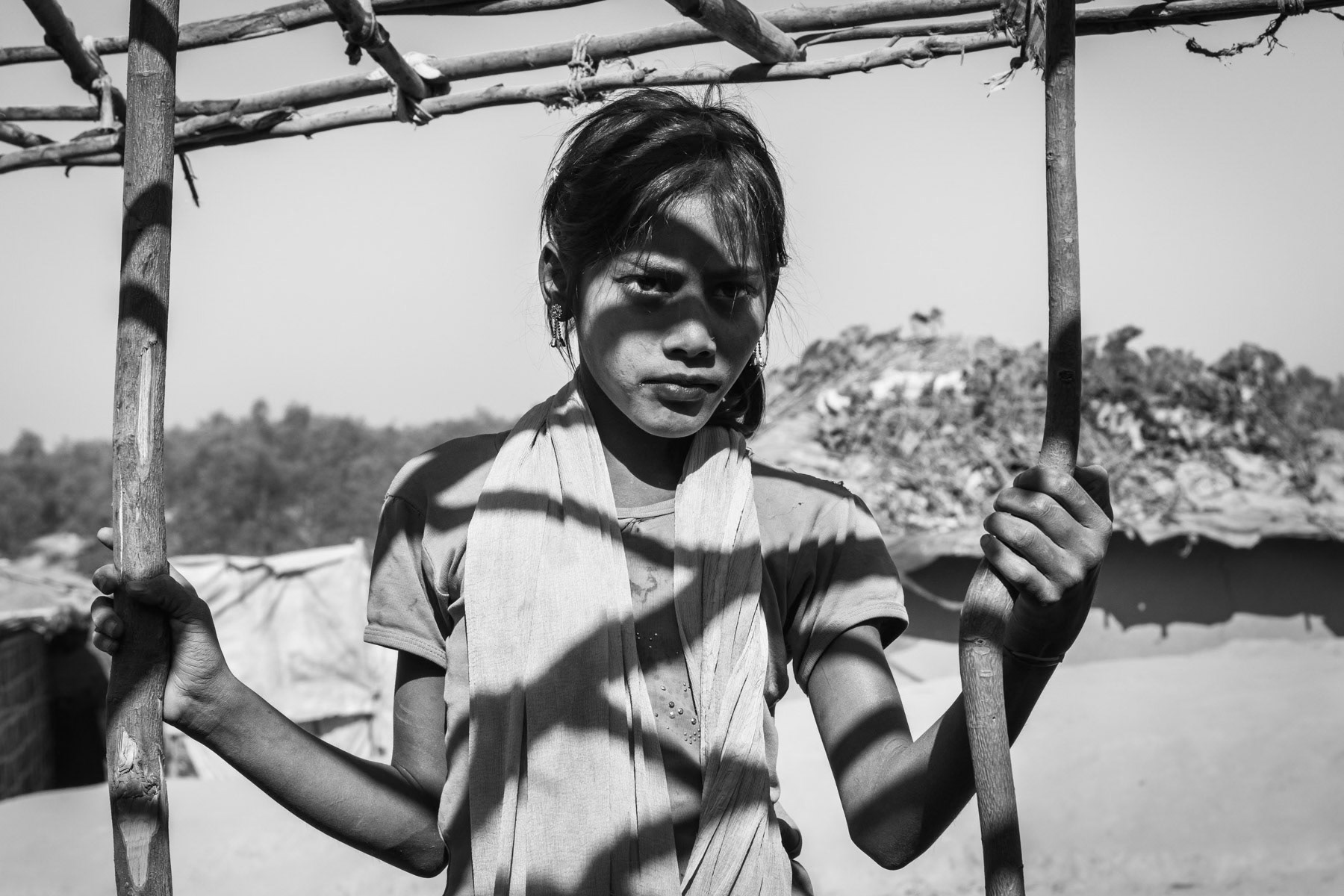
Rohingya girl that has arrived few days ago with her family from Myanmar, escaping persecution and violence. Nearly 100,000 Rohingya have fled northern Rakhine State in Myanmar since October 2016. Kutupalong refugee camp, Bangladesh, February 2017

Newly arrived Rohingya refugees fleeing ongoing ethnic cleansing campaigns in northern Rakhine. Kutupalong refugee camp, Cox's Bazar, Bangladesh, February 2017
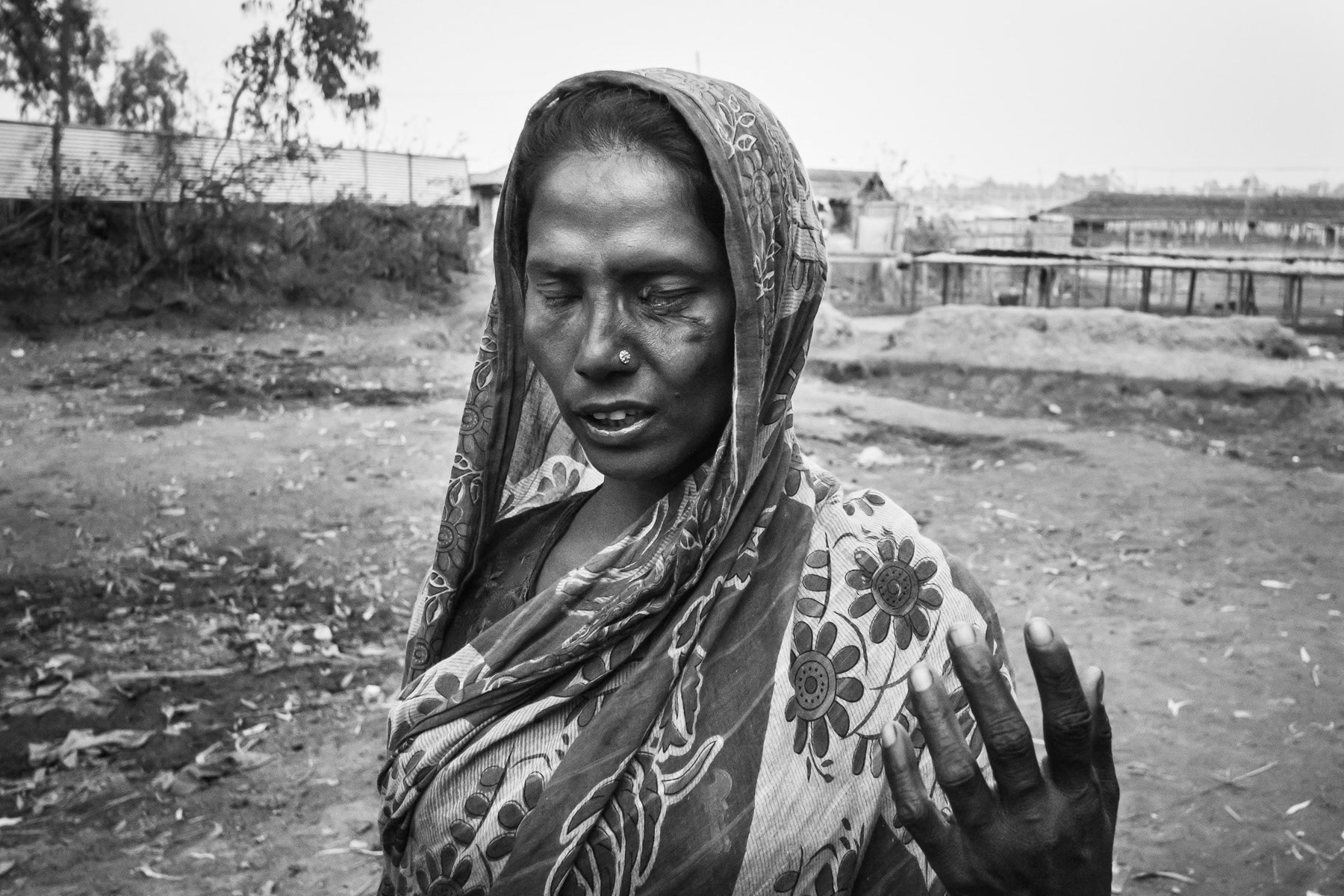
Victim of torture who has recently fled from Myanmar after her husband has been taken away by the army. She has no news if her husband is still alive. Najirar Tak, Cox's Bazar, Bangladesh, February 2017
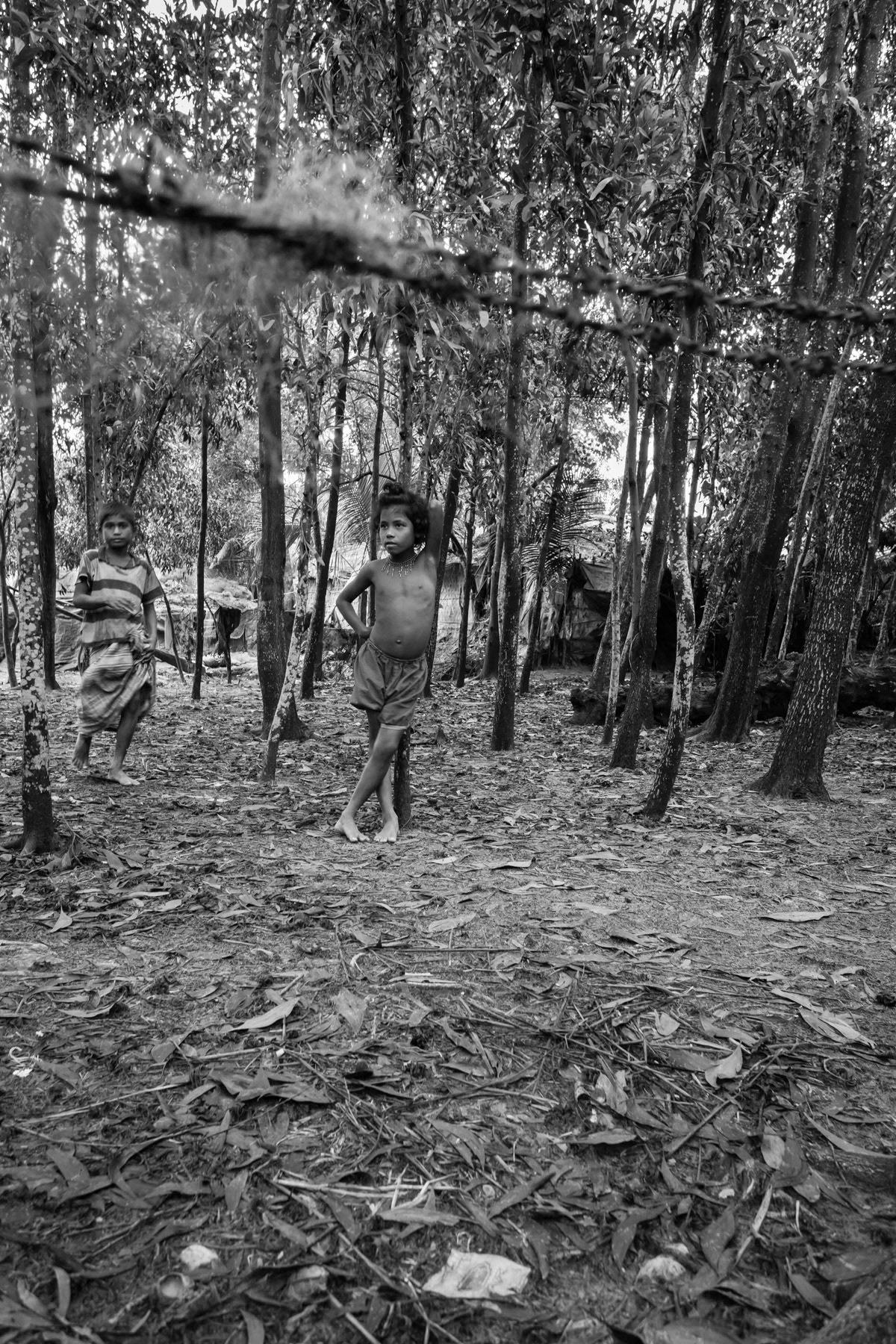
Rohingya refugees in Teknaf district at the border with Myanmar, Bangladesh, June 2015
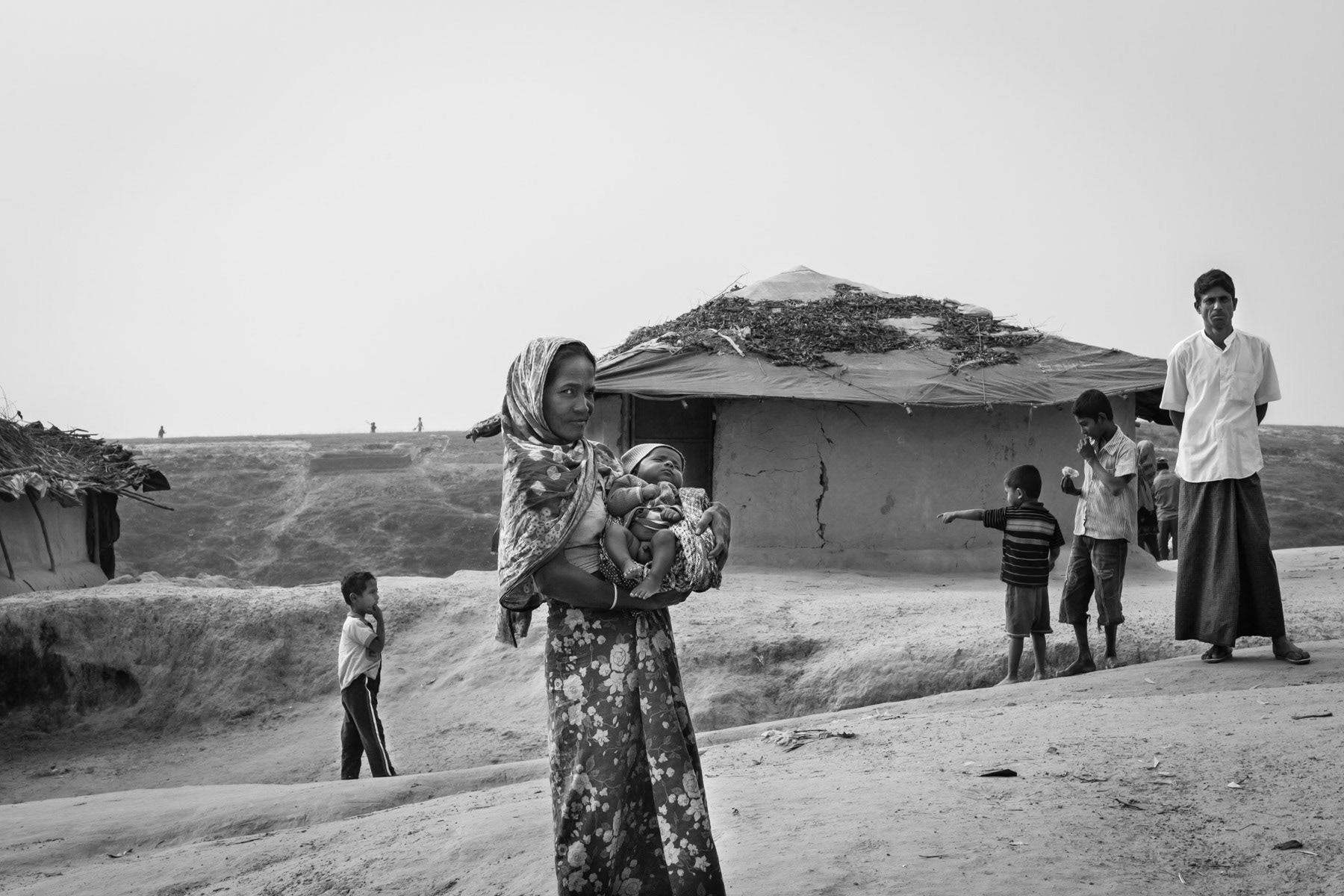
Rohingya refugees, Kutupalong camp in Ukiya near Teknaf in southern Bangladesh, December 2015
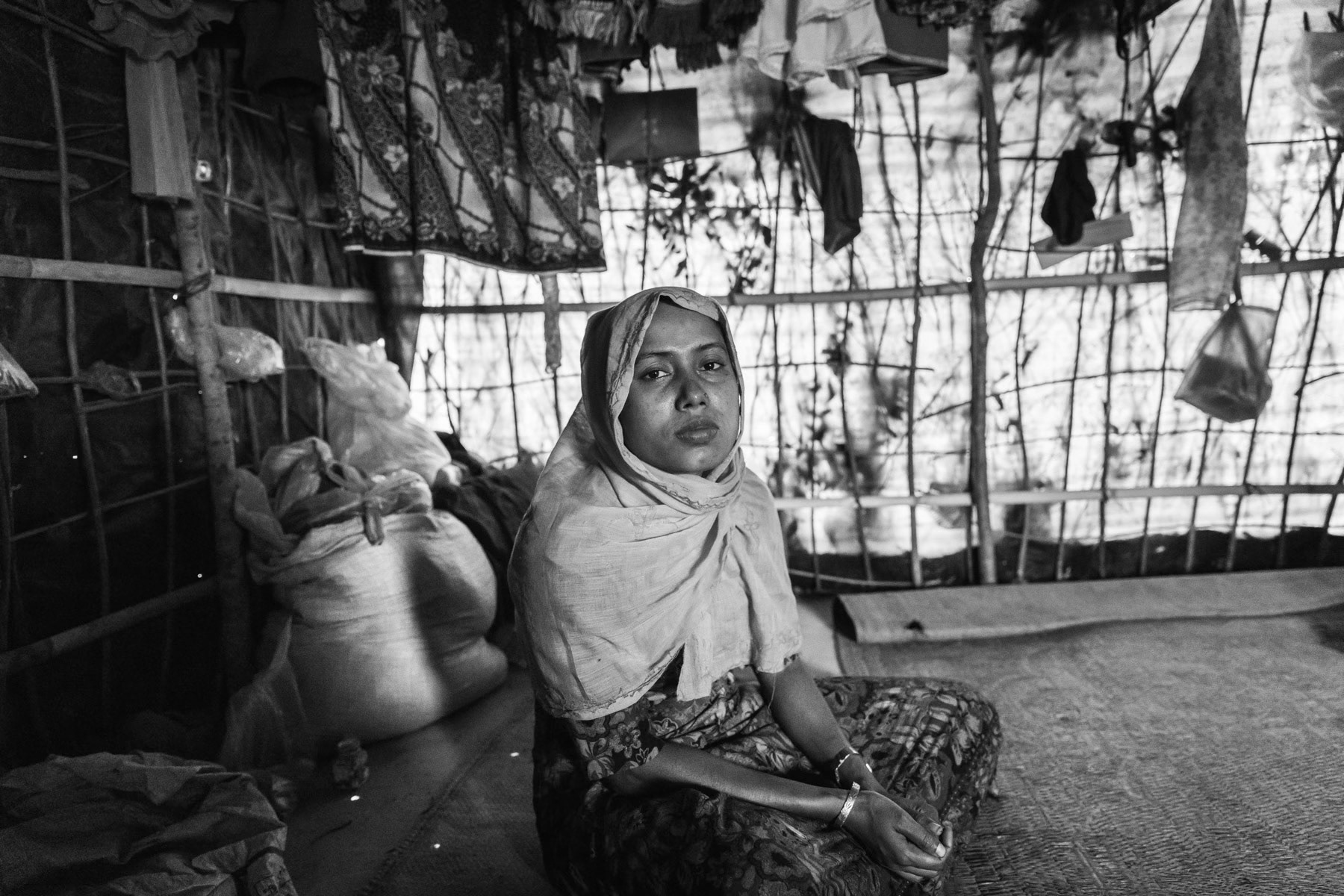
25 year old rape victim, has 2 children, her husband was killed. She was raped for 3 days by the military. Fled to Bangladesh a month ago. Balukhali camp for Rohingya refugees, Cox's Bazar, Bangladesh, February 2017

Stateless Rohingya refugee in Bangladesh, Kutupalong camp, Ukhiya, December 2015
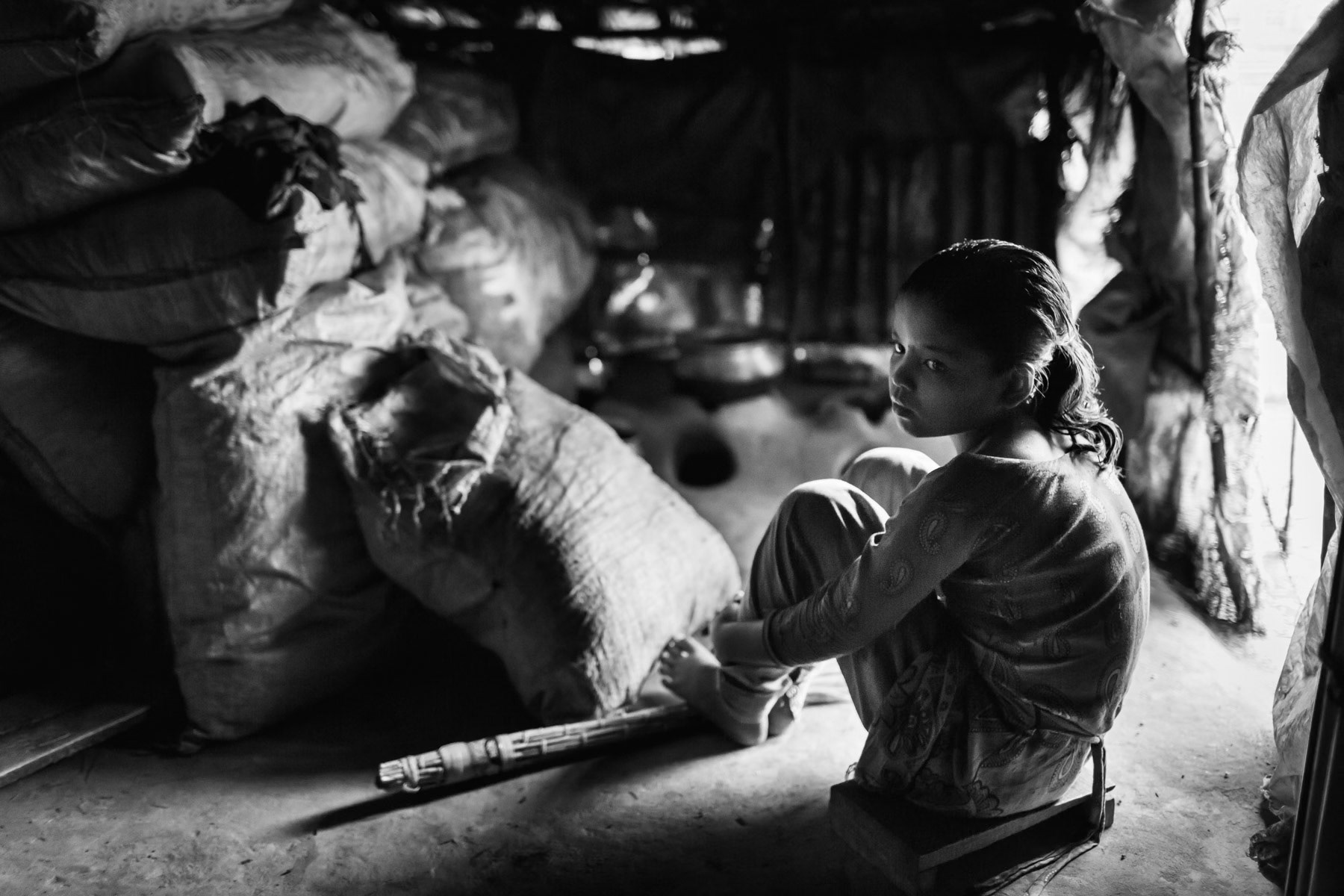
Interior of a makeshift shelter for Rohingya refugees in Nazirar Tek. Cox's Bazar, Bangladesh, May 2016
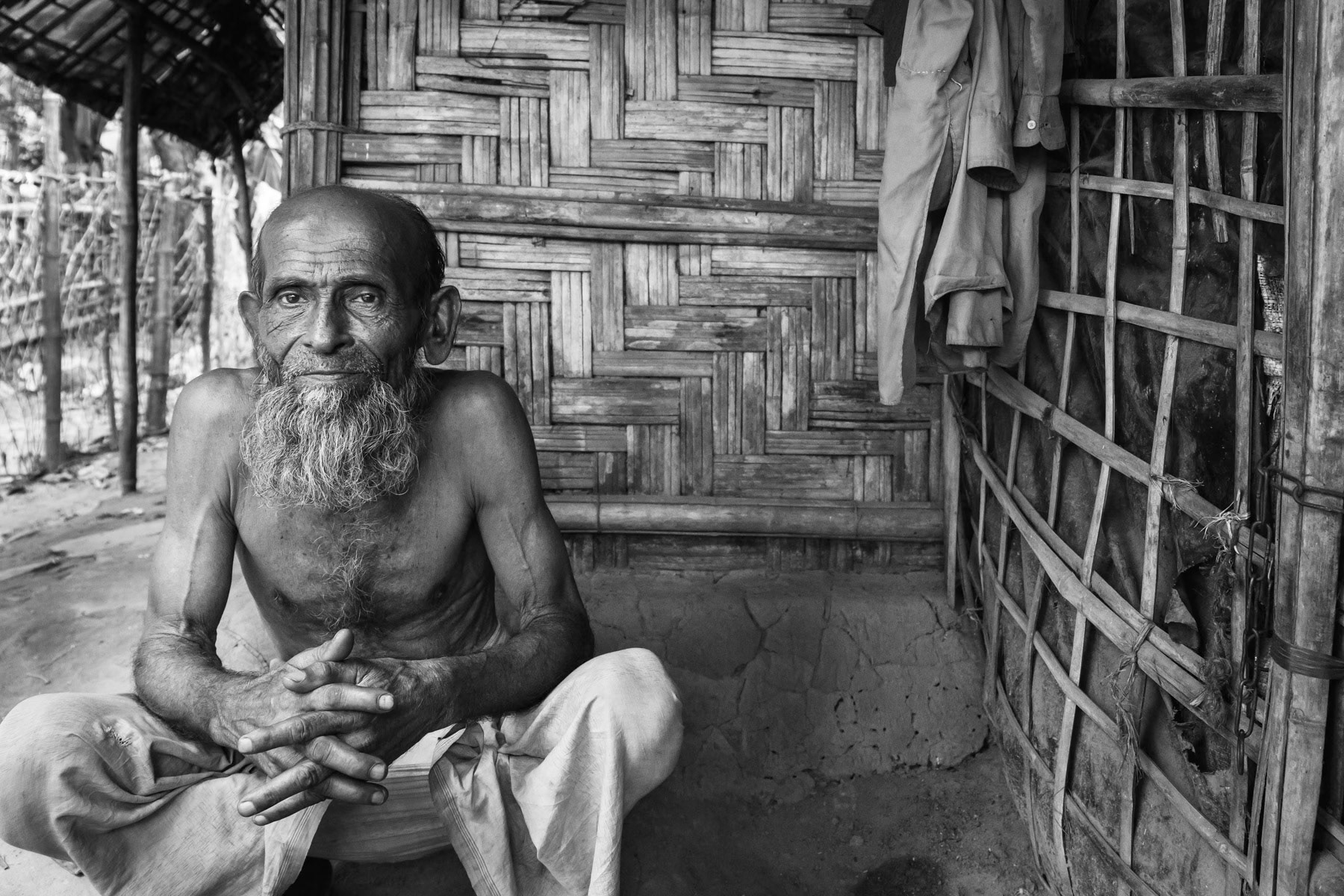
Rohingya refugee, Char Para on Maheskhali peninsula, Bangladesh, May 2016
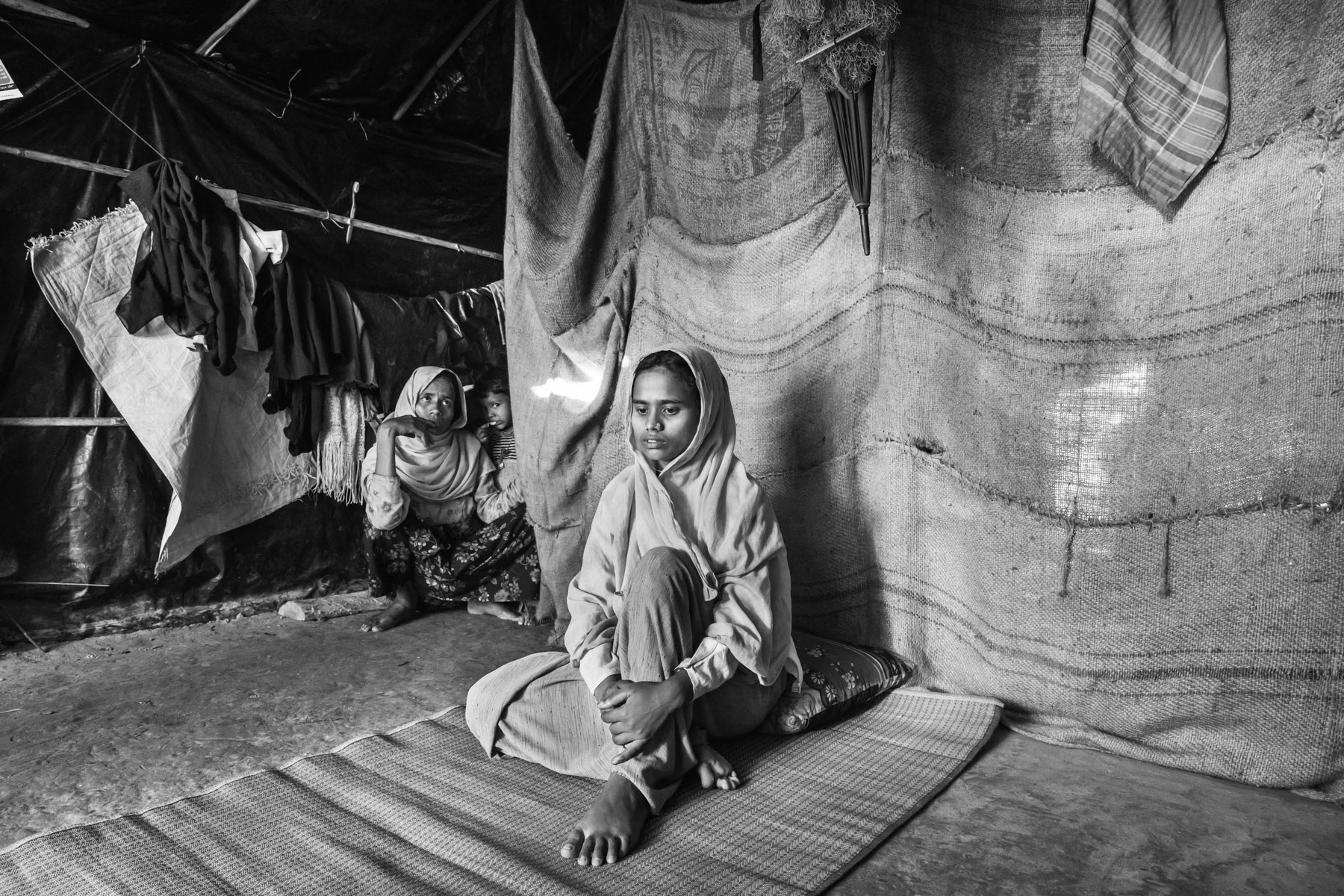
Jomila Begum is 18 years old from Tula Tuli in Maungdaw township. The attack on the village took place on 30 August, she arrived with her family 4 days later in Bangladesh. Her husband and 2 year old son got shot by the Myanmar military. While running away she was shot near the belly. Kutupalong refugee camp, Cox's Bazar, Bangladesh, November 2017
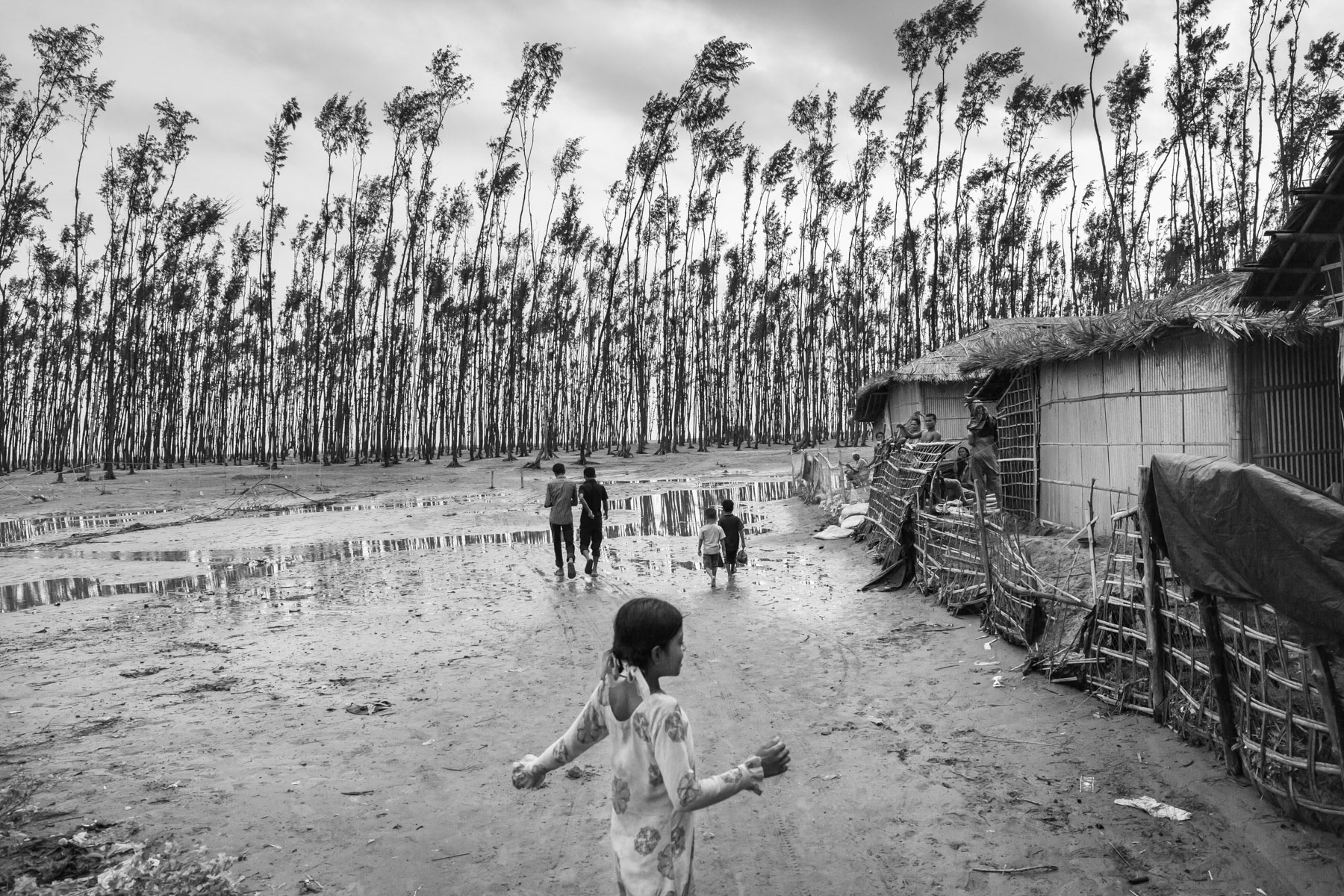
Nazirar Tek settlement for stateless Rohingya near the fish drying fields of Cox's Bazar, Bangladesh, May 2016
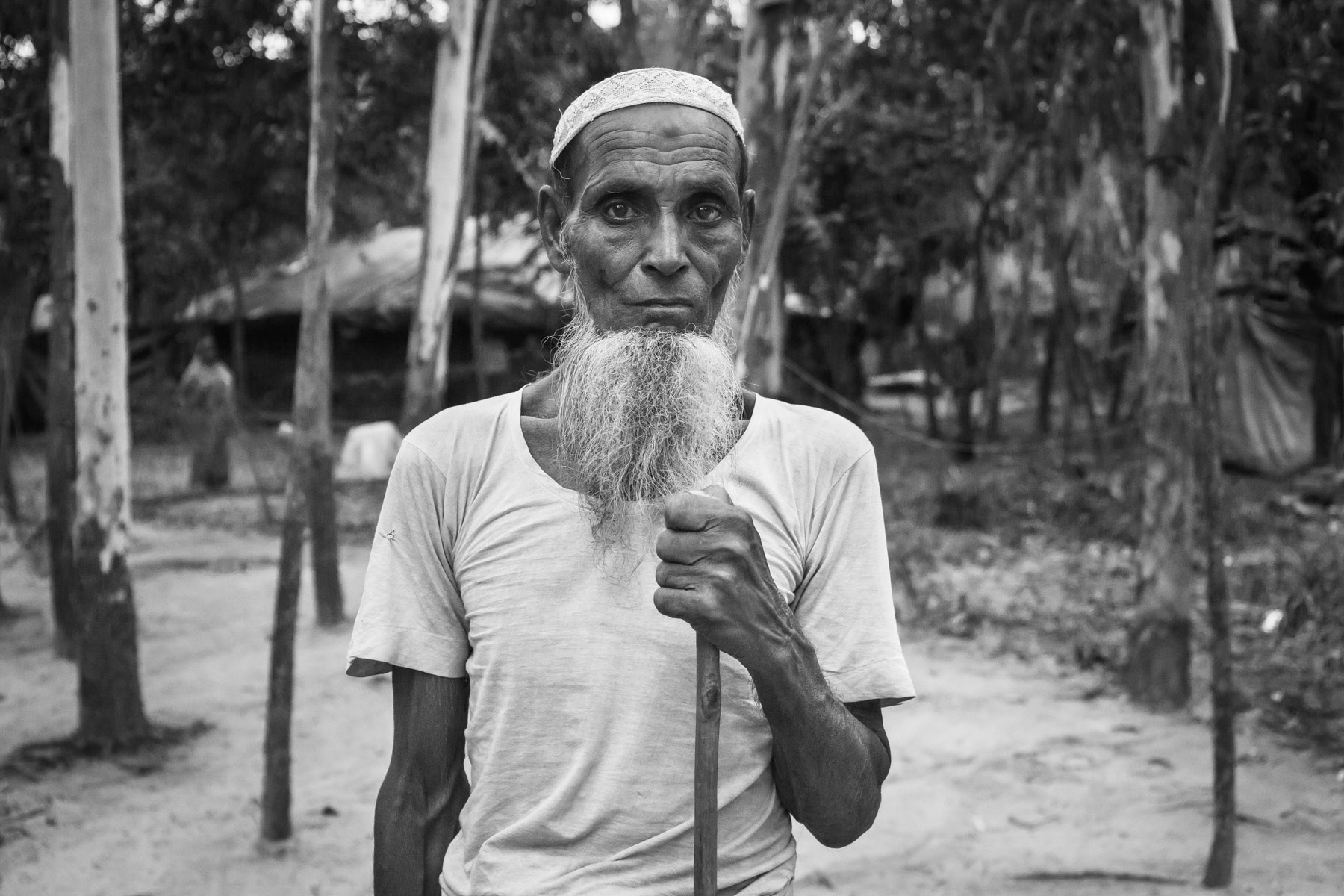
Stateless Rohingya refugee from Burma. Char Para on Maheskhali peninsula, Bangladesh, May 2016

A Torture victim and maimed with a machette by the Burmese military. She was tortured in order to provide information on the whereabouts of the men of her village. She is in need of medical care but has no money to afford it. Kutupalong Rohingya refugee camp part III for new arrivals. Cox's Bazar, Bangladesh, February 2017
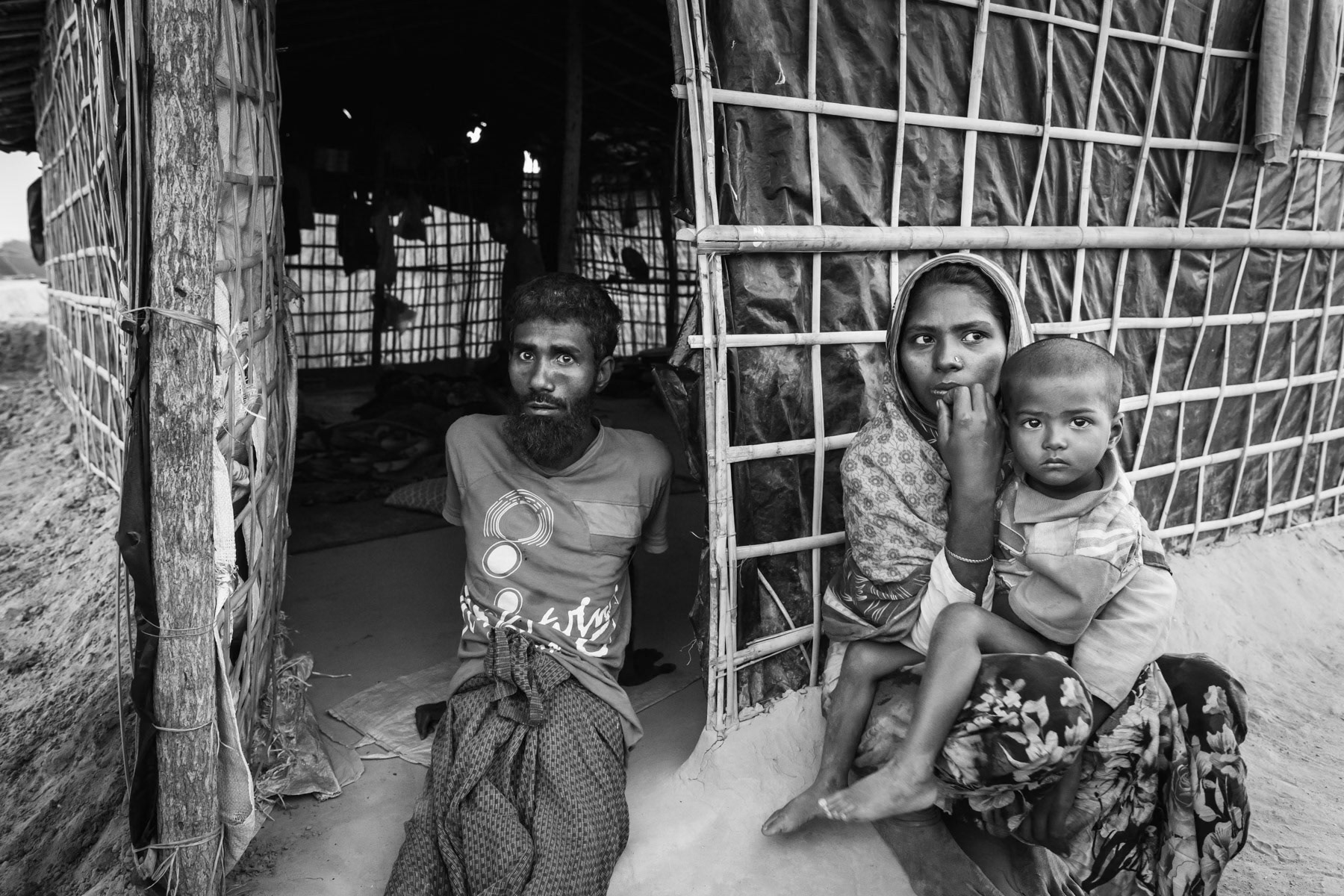
A Rohingya refugee that has recently arrived in Bangladesh with his wife and 5 children. He was an Imam in Myanmar and was tortured in November by the army for days after his legs were broken with metal bars. He was carried into the country. Kutupalong new refugee camp, Cox's Bazar district, Bangladesh, February 2017

Rohingya refugee that arrived few days ago with his family fleeing persecution and ethnic cleansing campaigns in northern Rakhine. Kutupalong refugee camp, Bangladesh, February 2017

New part of Kutupalong refugee camp for Rohingya being extended on daily basis to cope with the 100,000 Rohingya that have fled violence in Rakhine since October 2016. Kutupalong, Bangladesh, February 2017
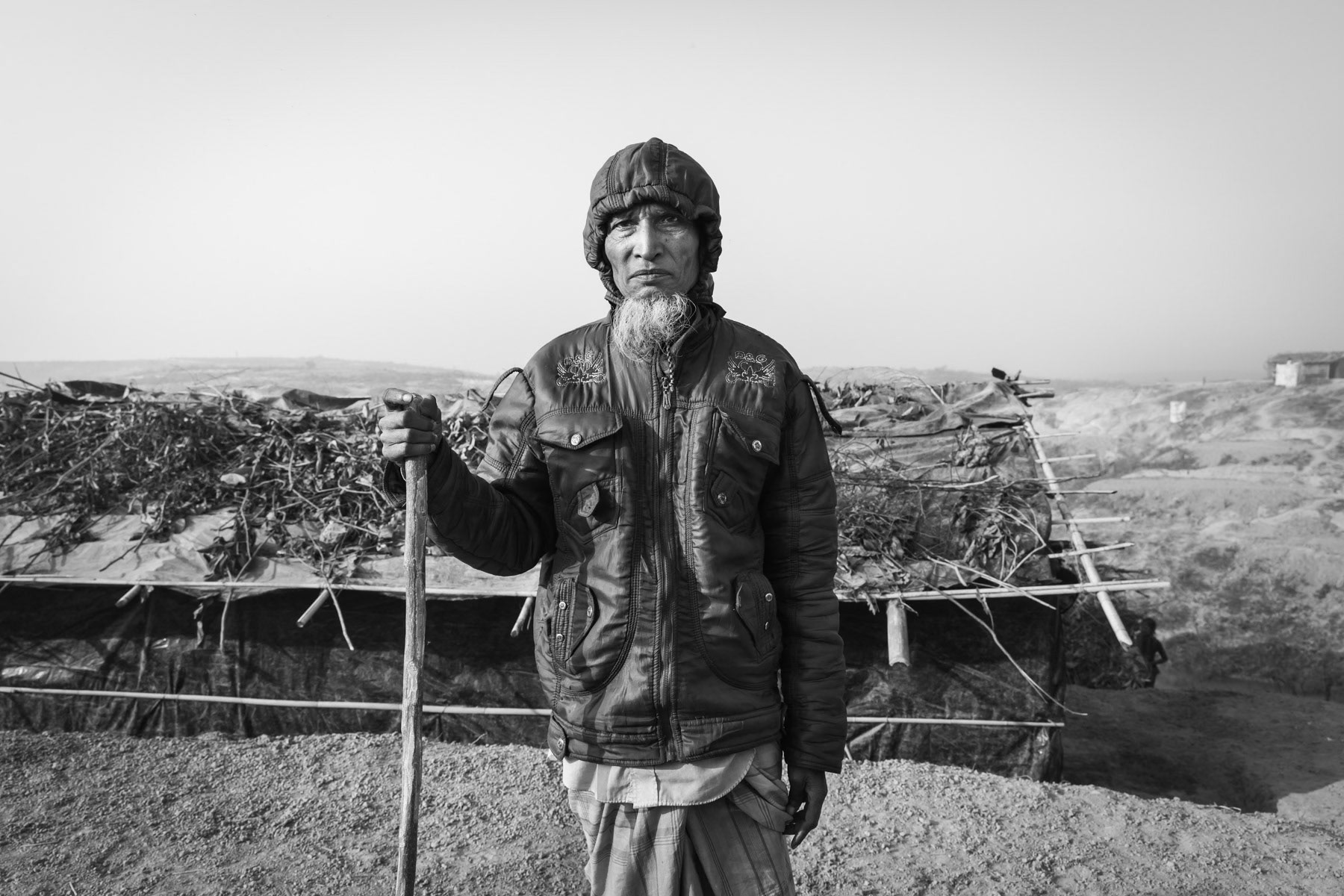
Rohingya refugee from north Maungdaw township wounded by shrapnel while his village was attacked by the Burmese army. Fled to Bangladesh in January 2017. Kutupalong refugee camp, Cox's Bazar district, Bangladesh, February 2017
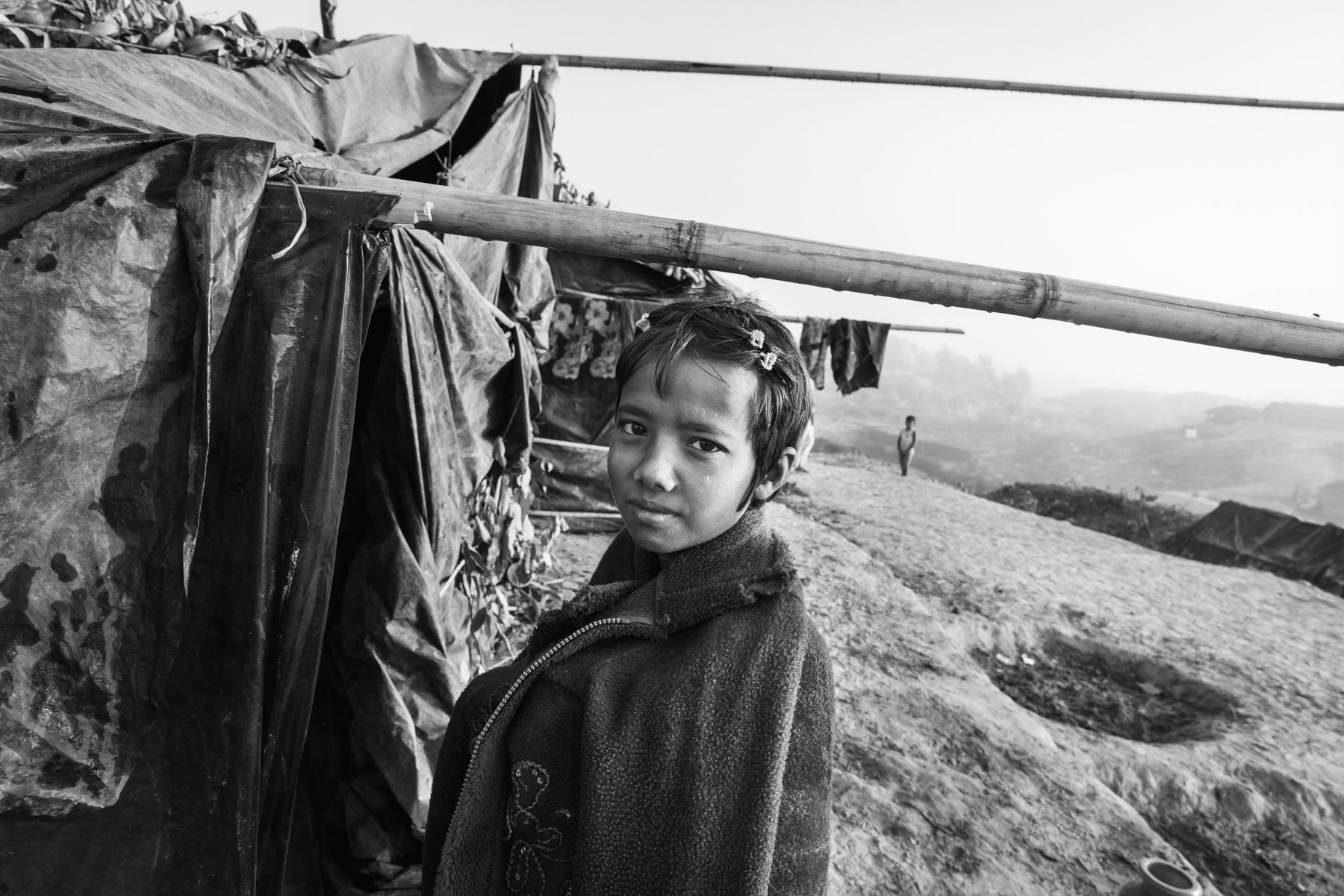
Rohingya girl that arrived few days ago with her family fleeing persecution and ethnic cleansing campaigns in northern Rakhine. Kutupalong refugee camp, Bangladesh, February 2017

Rohingya girl that arrived few days ago with her family feeing persecution and ethnic cleansing campaigns in northern Rakhine. Kutupalong refugee camp, Bangladesh, February 2017
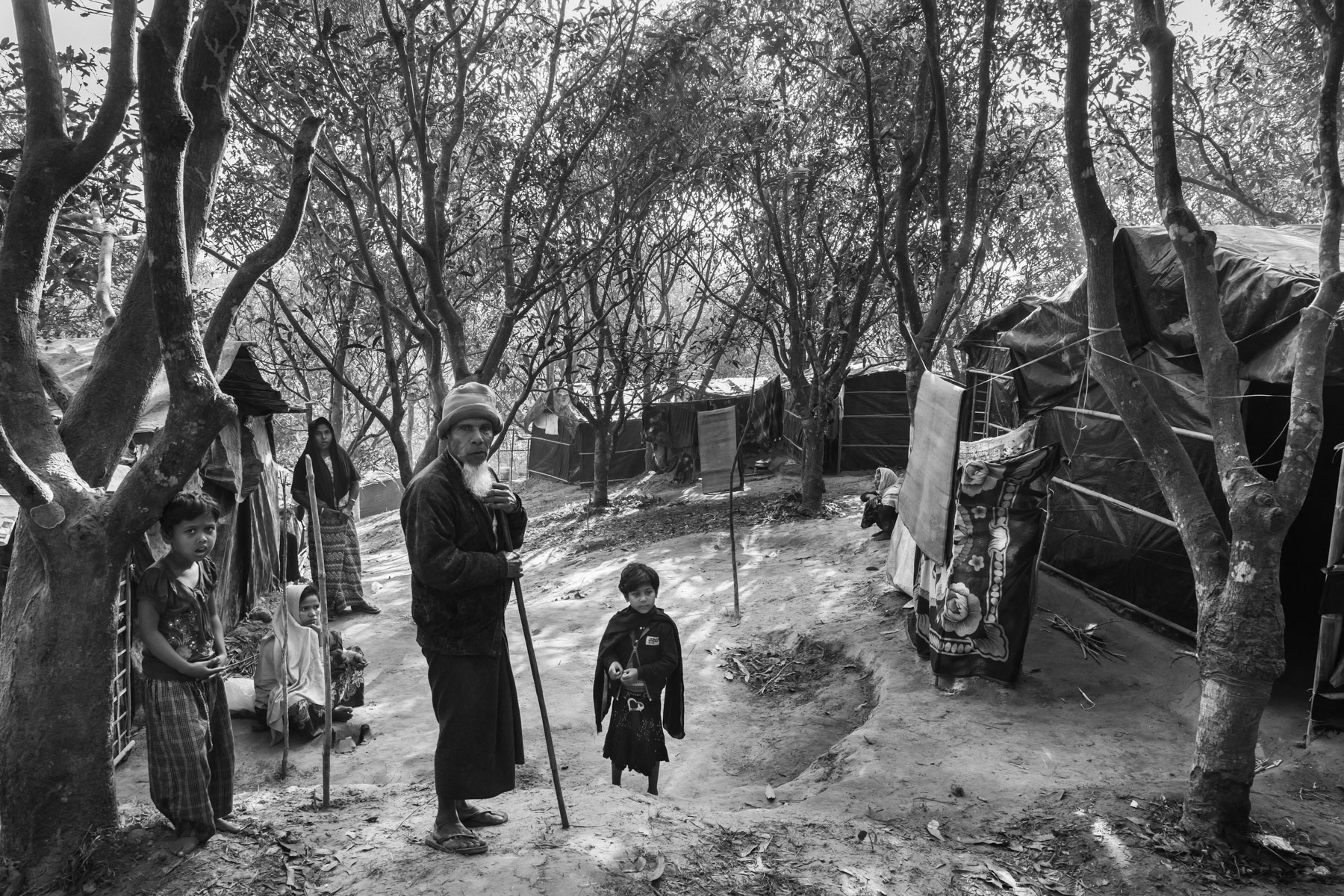
Newly built shelters at a new camp established to cope with a part of the 80,000 Rohingya that have fled northern Maungdaw township in Myanmar since the begining of the robust security crackdown in October 2016. New part of Kutupalong camp, Cox's Bazar, Bangladesh, February 2017

Rohingya families that arrived few days ago fleeing persecution and ethnic cleansing campaigns in northern Rakhine. Kutupalong refugee camp, Bangladesh, February 2017
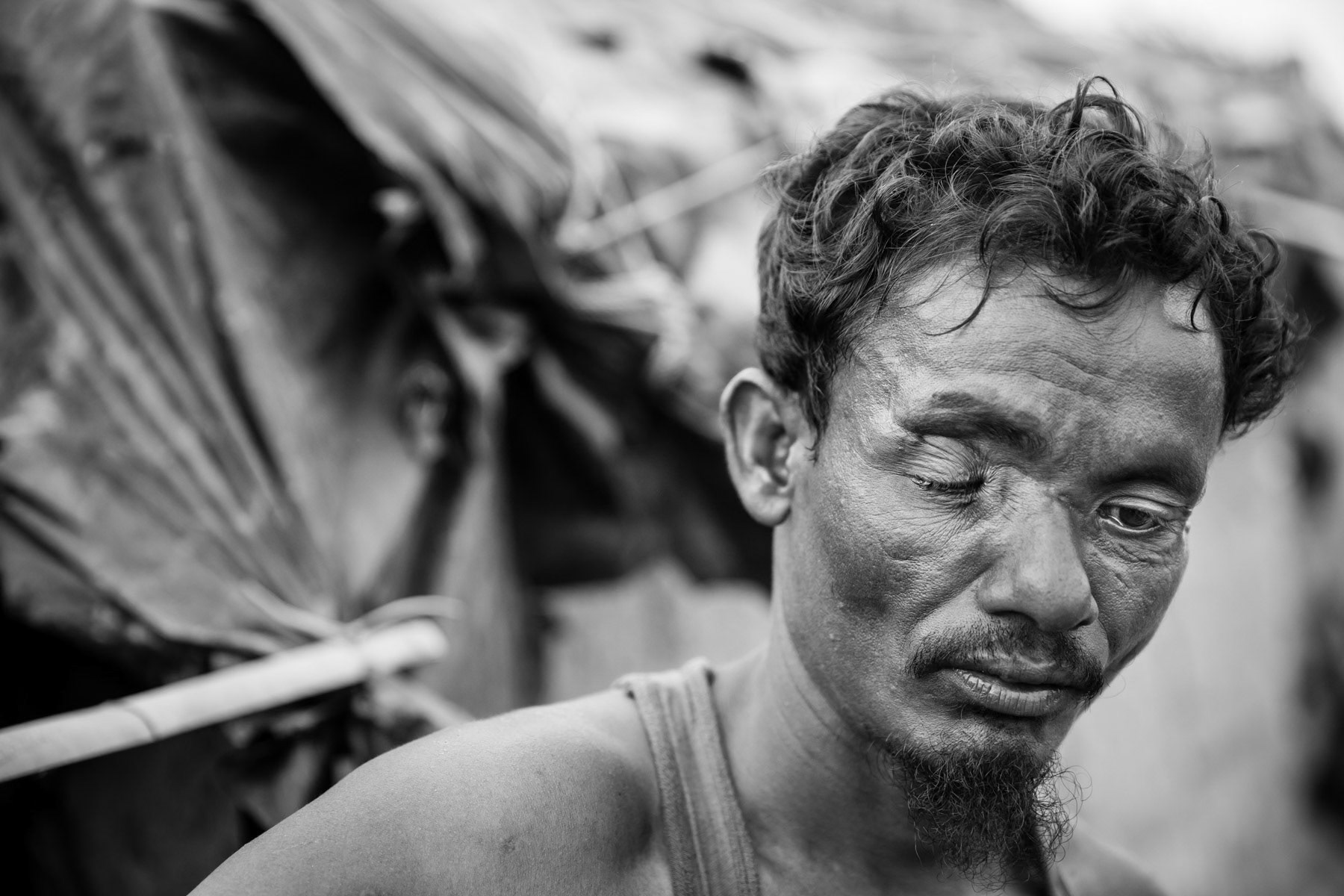
Rohingya refugee arrived end December with his wife and five children. He was tortured and attacked with a machete and is blind on one eye as a result. Kutupalong refugee camp, Cox's Bazar, Bangladesh, May 2017
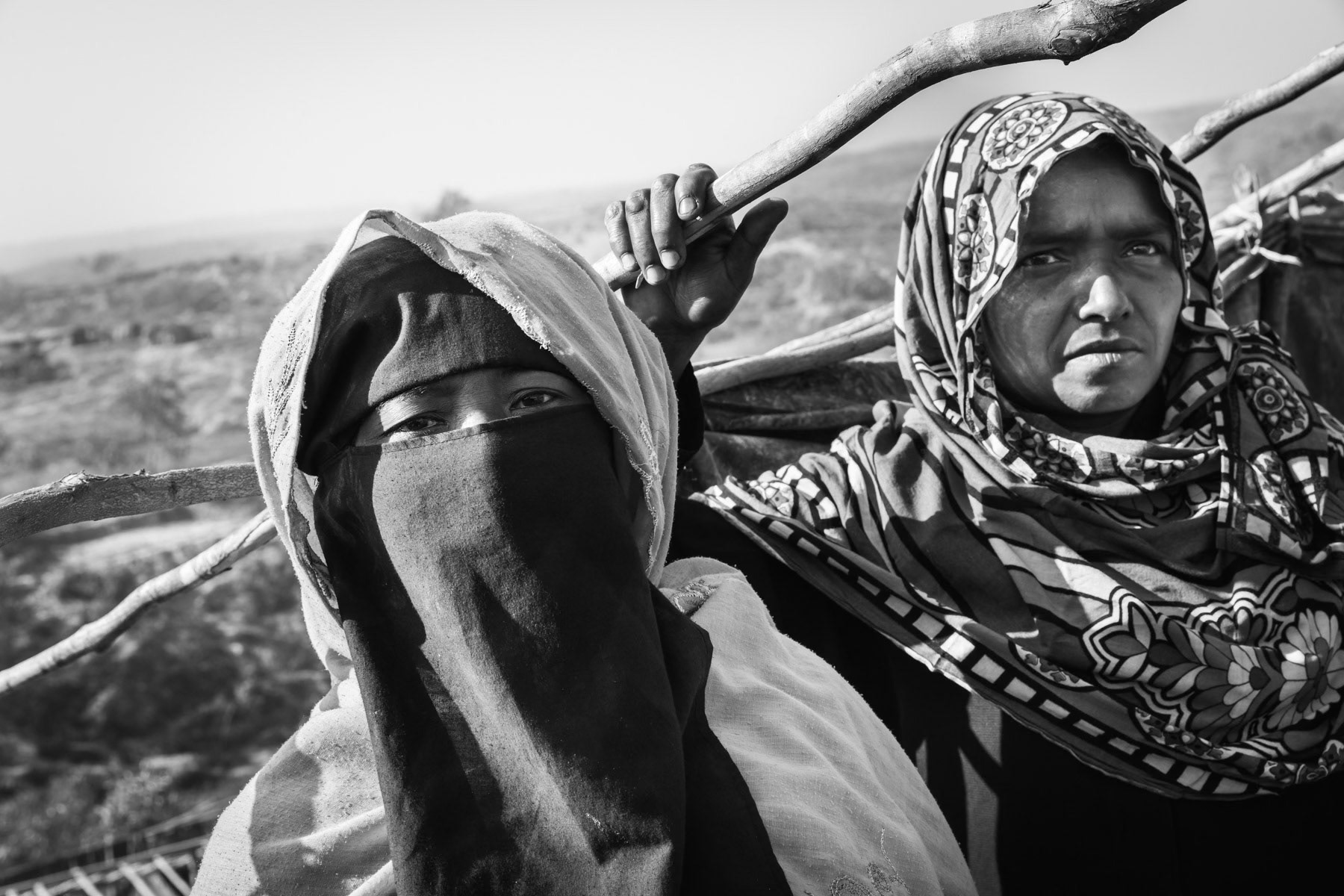
Rohingya woman that fled with her five kids after her husband was killed by military forces in northern Maungdaw in November 2016. Kutupalong extension for newly arrived refugees, Cox's Bazar, Bangladesh, February 2017
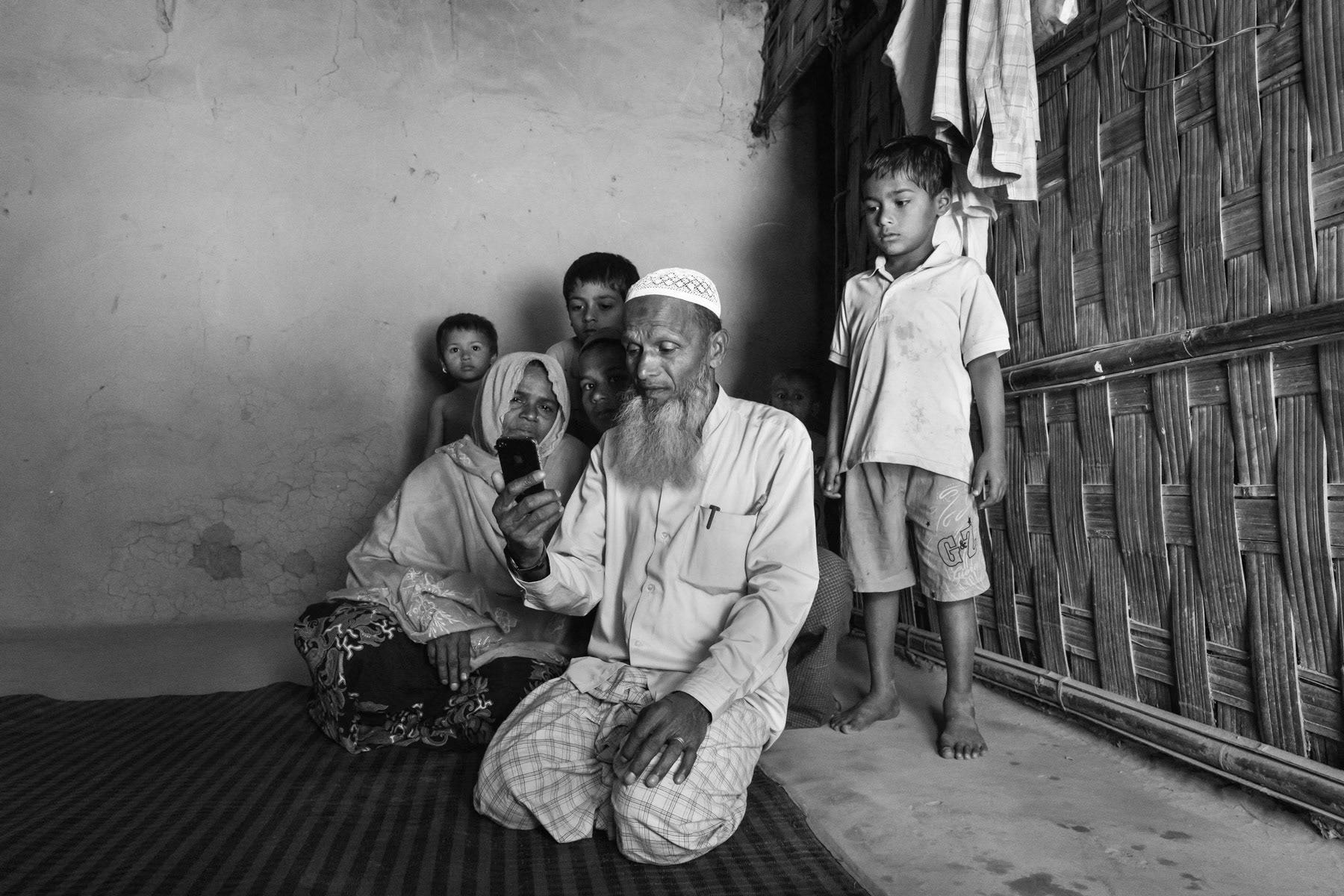
Family communicating with their son Zahid in Malaysia for the first time since they fled Myanmar. Zahid fled to Malaysia by boat as a refugee in 2009 and is now providing money for his family. The family arrived two weeks earlier to Bangladesh and lives in a shed they rent for 40 dollar per month. Nhila village, Teknaf, Bangladesh, February 2017
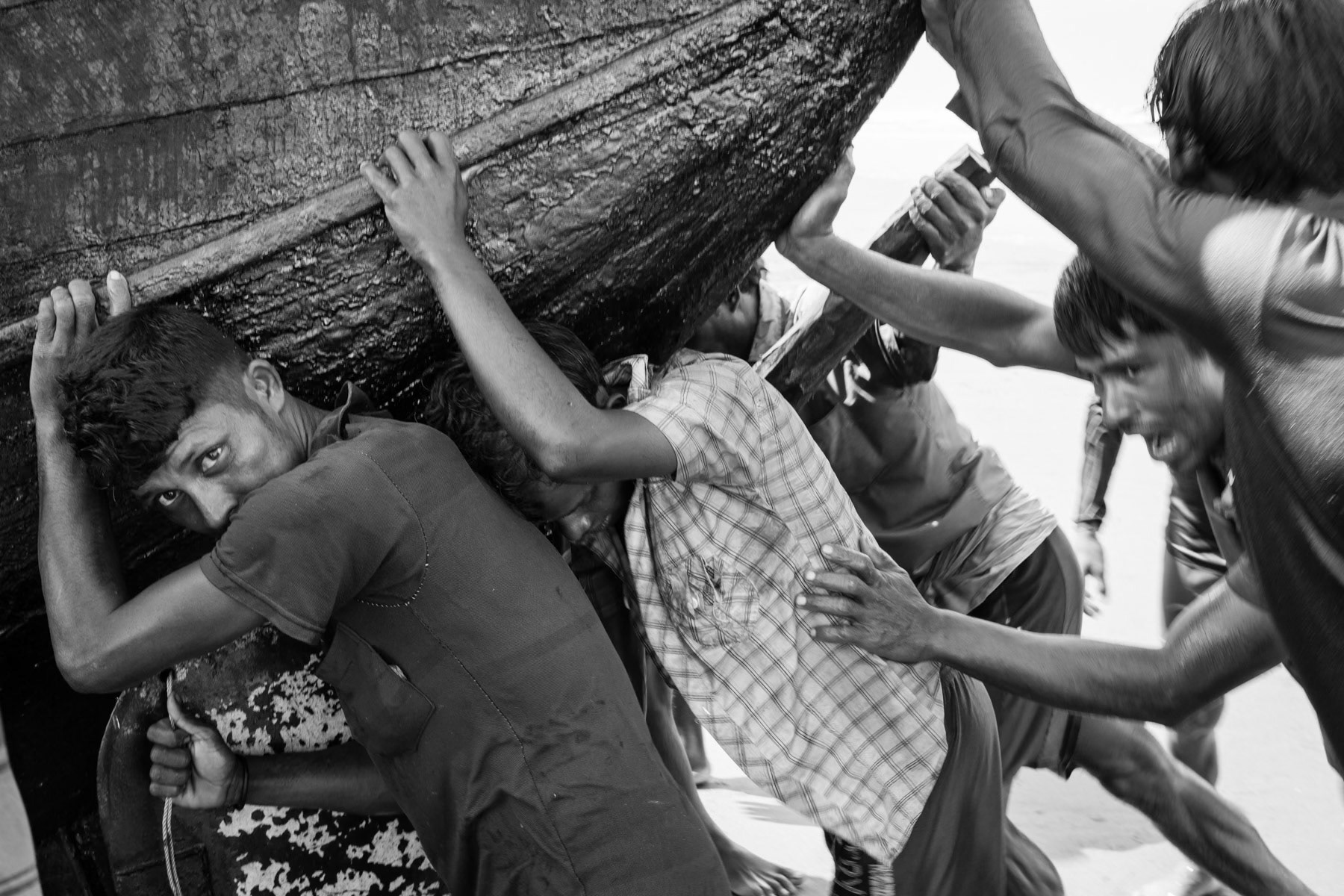
Rohingya fishermen working as daily labour for Bangladeshi boat owners, Shamplapur, Bangladesh, June 2015

Newly arrived Rohingya refugees fleeing ongoing ethnic cleansing campaigns in northern Rakhine. Kutupalong refugee camp, Cox's Bazar, Bangladesh, February 2017
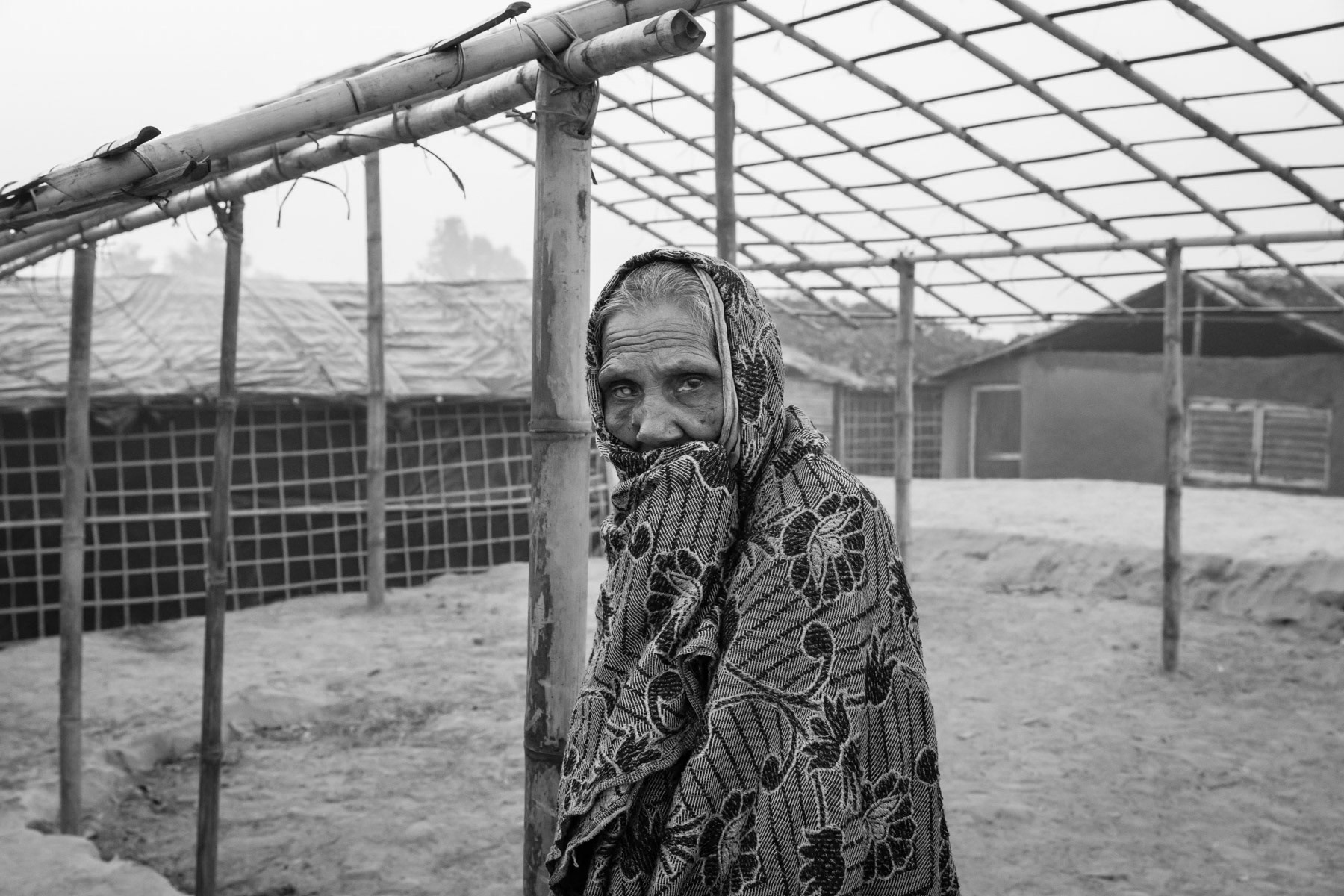
Rohingya elderly woman that has arrived few days ago from Myanmar, escaping persecution and violence. Nearly 100,000 Rohingya have fled northern Rakhine State in Myanmar since October 2016. Kutupalong refugee camp, Bangladesh, February 2017
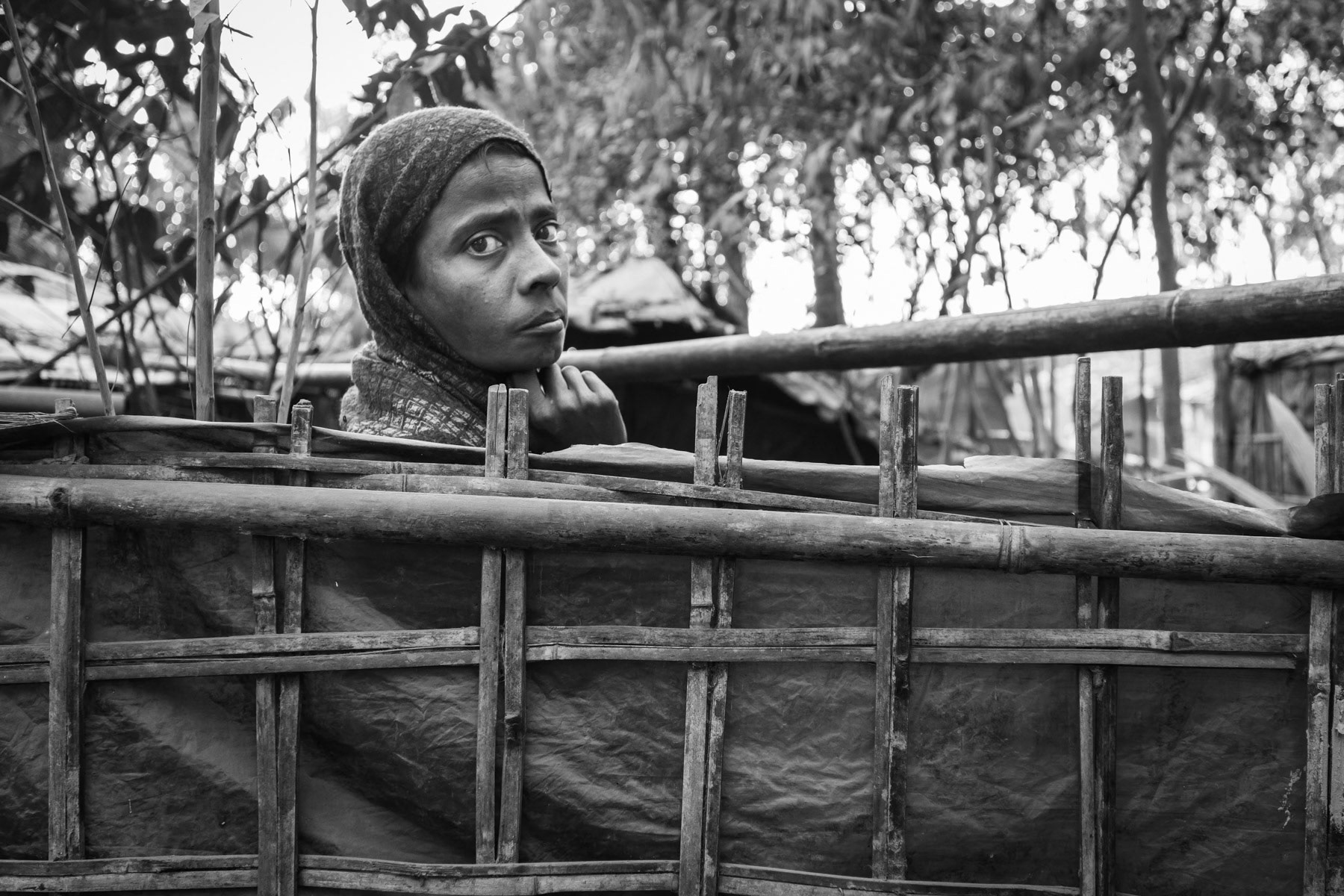
Rohingya living in Najirar Tek area, near the fish drying plants where a lot of Rohingya refugees are employed. Cox's Bazar, Bangladesh, February 2017
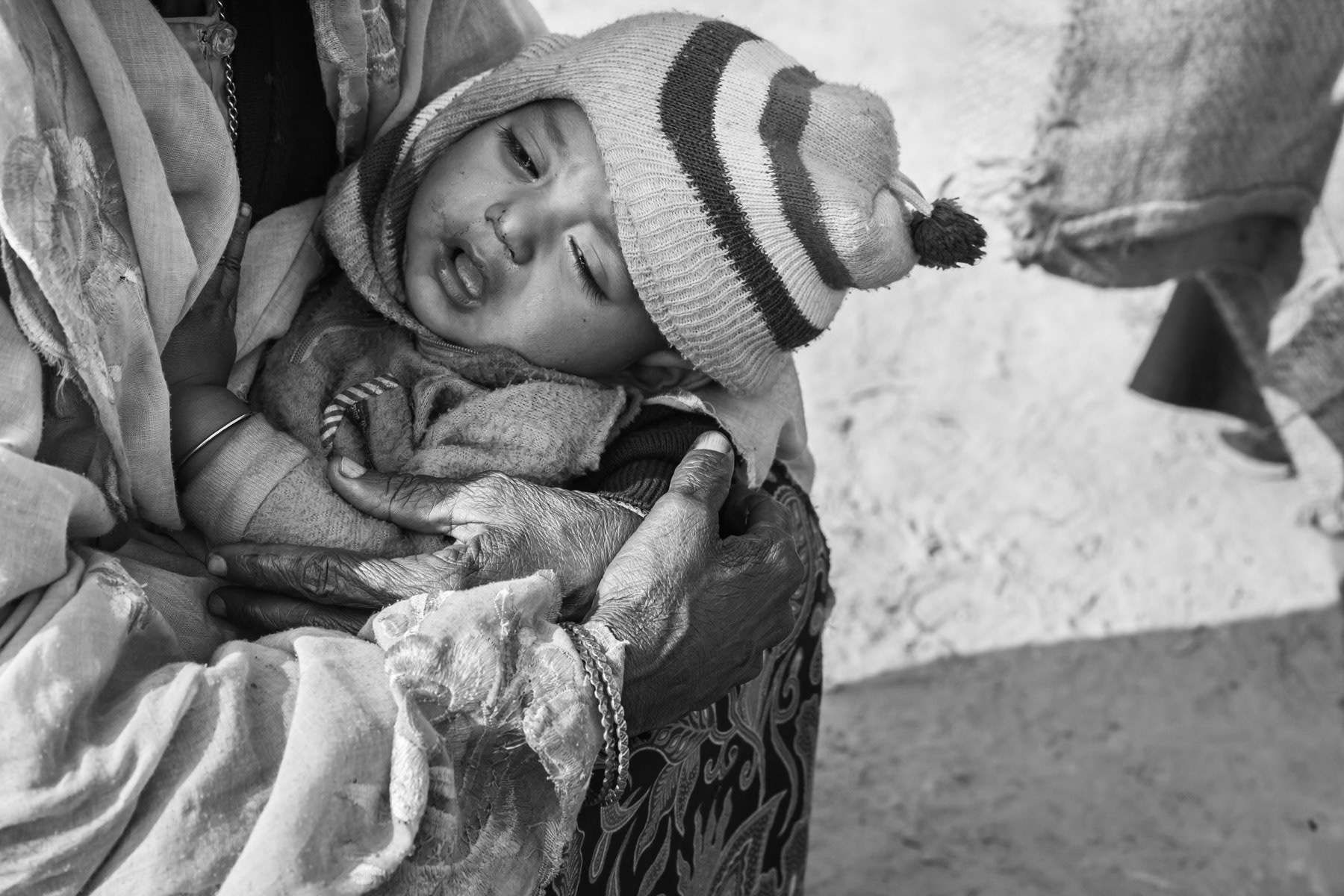
Grand mother and her grand child after having fled from Myanmar few days ago. Kutupalong Rohingya refugee camp, Bangladesh, February 2017

Newly built part of Kutupalong refugee camp hosting more than 50,000 Rohingya refugees that have arrived in Kutupalong camp alone during the past 3 months. Cox's Bazar, Bangladesh, February 2017

Mohamed Ziarad and his 3 year old brother were hit by helicopter fire while their village near Buthidaung in Myanmar was attacked. After several days through the jungle they found refuge in Bangladesh as the more than 650,000 Rohingya refugees that have fled Myanmar since August 2017. Lambashiya section of Kutupalong refugee camp, Ukhiya, Bangladesh, November 2017
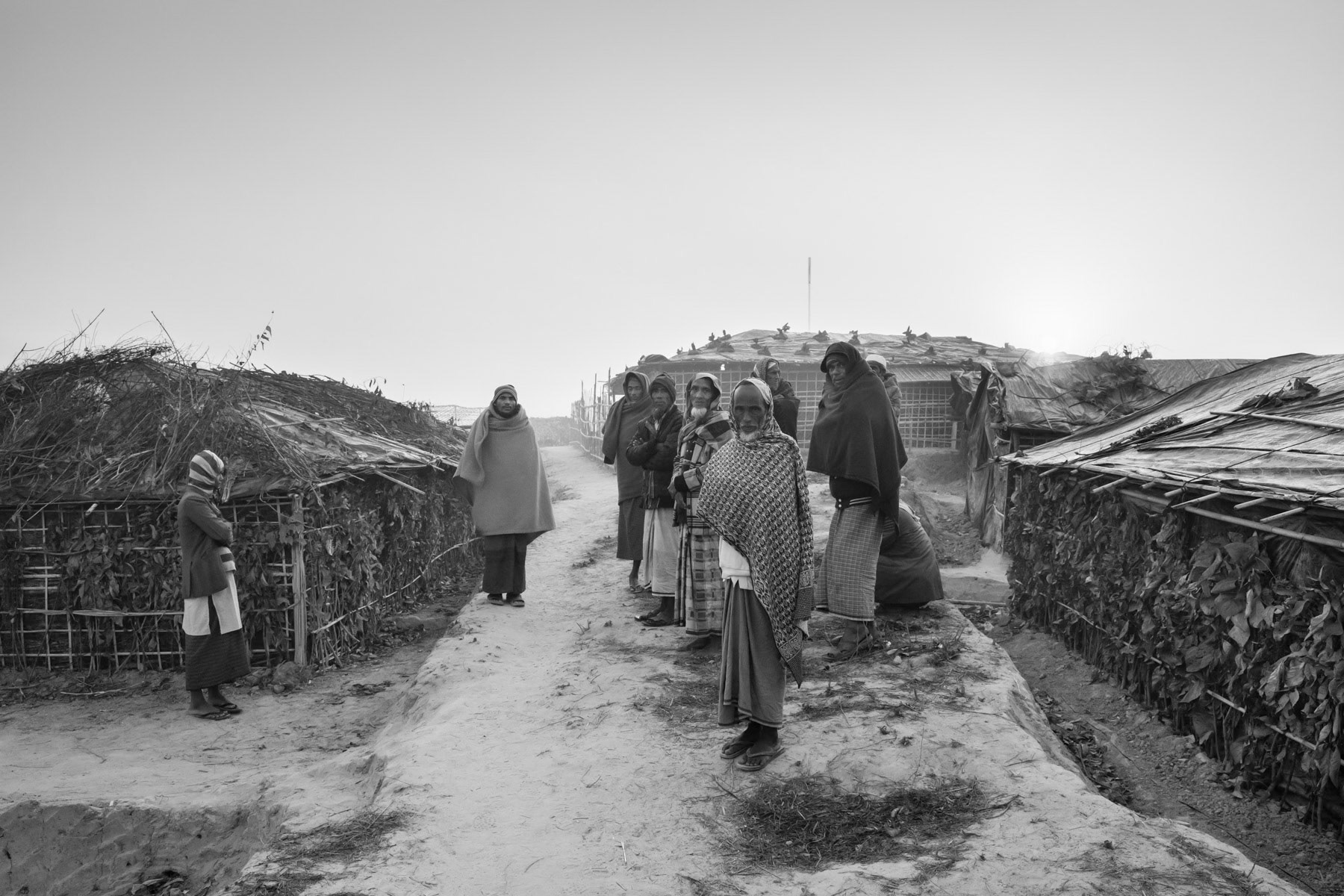
Newly built part of Kutupalong refugee camp hosting more than 50,000 Rohingya refugees that have arrived in Kutupalong camp alone during the past 3 months. Cox's Bazar, Bangladesh, February 2017
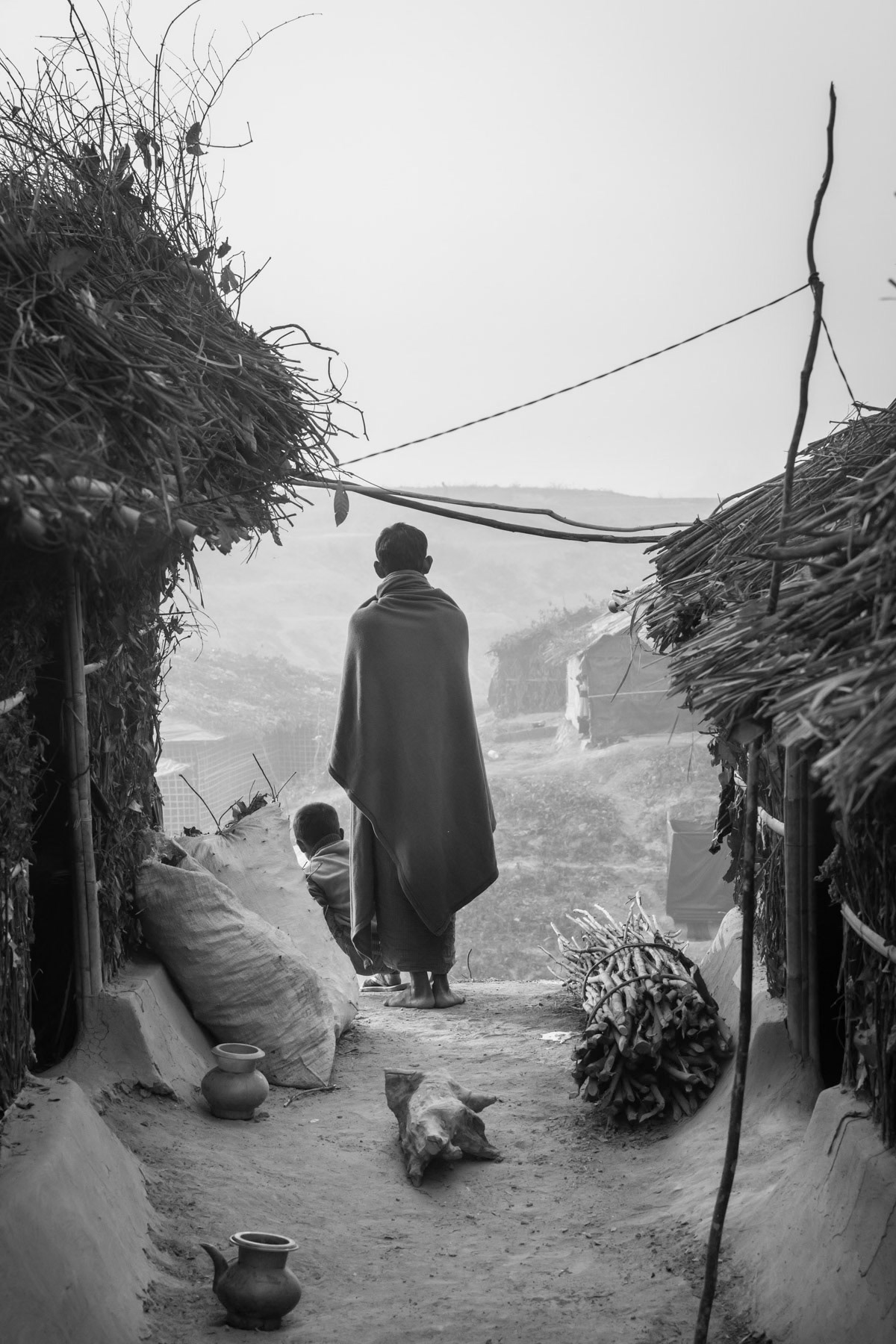
Newly built shelters at a new camp established to cope with a part of the 80,000 Rohingya that have fled northern Maungdaw township in Myanmar since the begining of the robust security crackdown in October 2016. New part of Kutupalong camp, Cox's Bazar, Bangladesh, February 2017
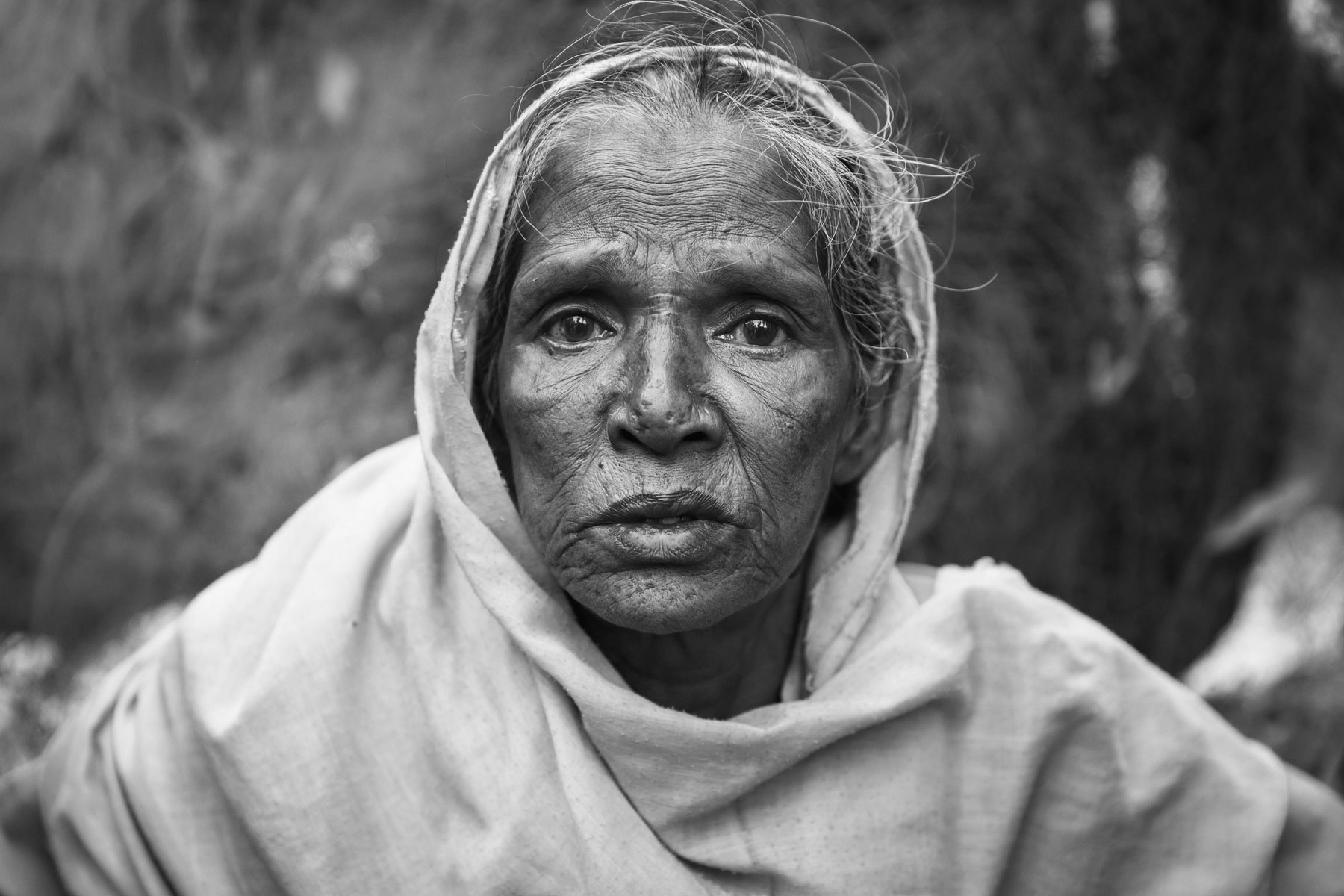
Elderly Rohingya woman victim of prolonged torture in Burma, she can't talk since then. Arrived mid January 2017 in Teknaf. Shamlapur refugee camp, Bangladesh, February 2017
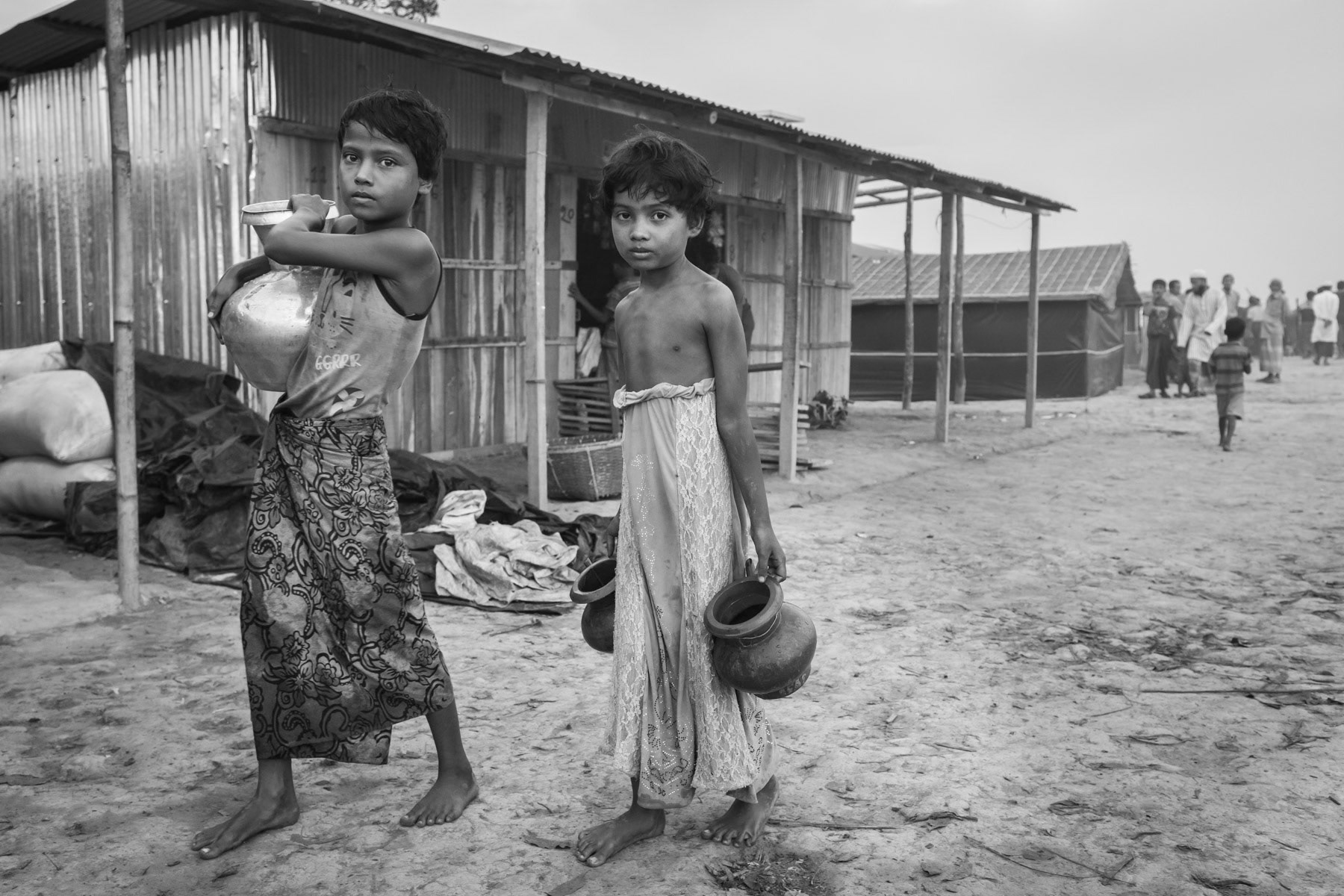
Rohingya children carrying water from one of the few tube wells in the refugee camp for new arrivals. More than 650,000 Rohingya refugees have arrived in Bangladesh since August 2017. Lamabashiya section in Kutupalong, November 2017
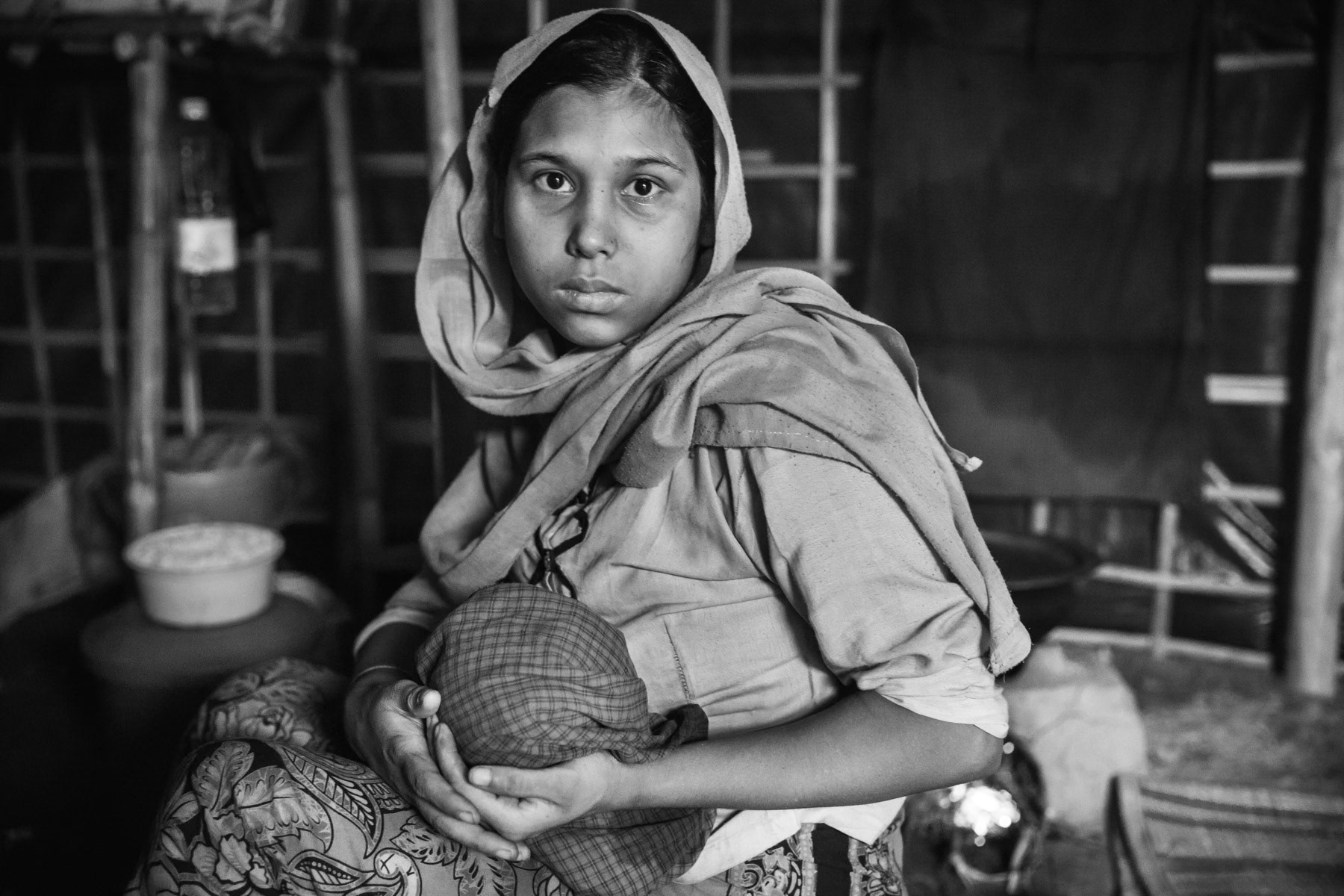
Mother and her one month old daughter fled from Thami village near Buthidaung in Rakhine state. Her husband was hit by shrapnel in the legs. They walked almost 15 days to reach the Bangladeshi border. More than half a million Rohingya have fled Myanmar since August and the start of the latest military security operations that are now widely qualified as ethnic cleansing campaigns. Kutupalong refugee camp, Ukhiya, Bangladesh, November 2017
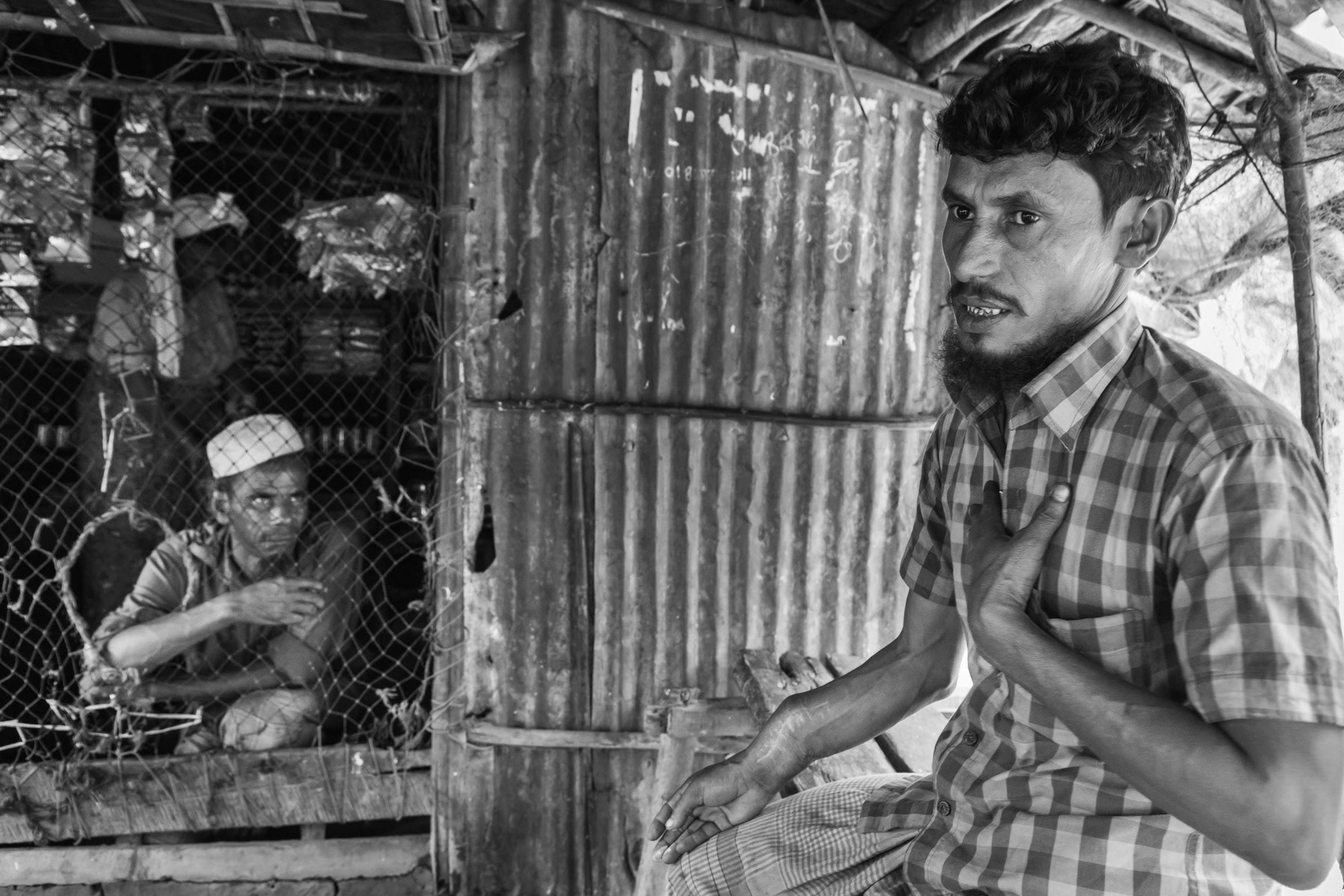
Thirty two year old Abdul Amin was a agriculture labouror and arrived in September 2017 in Bangladesh with his wife and 3 children. He got shot in the arm while their village was attacked by the Myanmar military. The entire village was burnt down. It took him and his family five days to reach safety in Bangladesh. Due to delayed medical care after the gun shot, he will probably sustain permanent disability on his right arm. Shamlapur camp, Shamlapur near Teknaf, Bangladesh, November 2017
